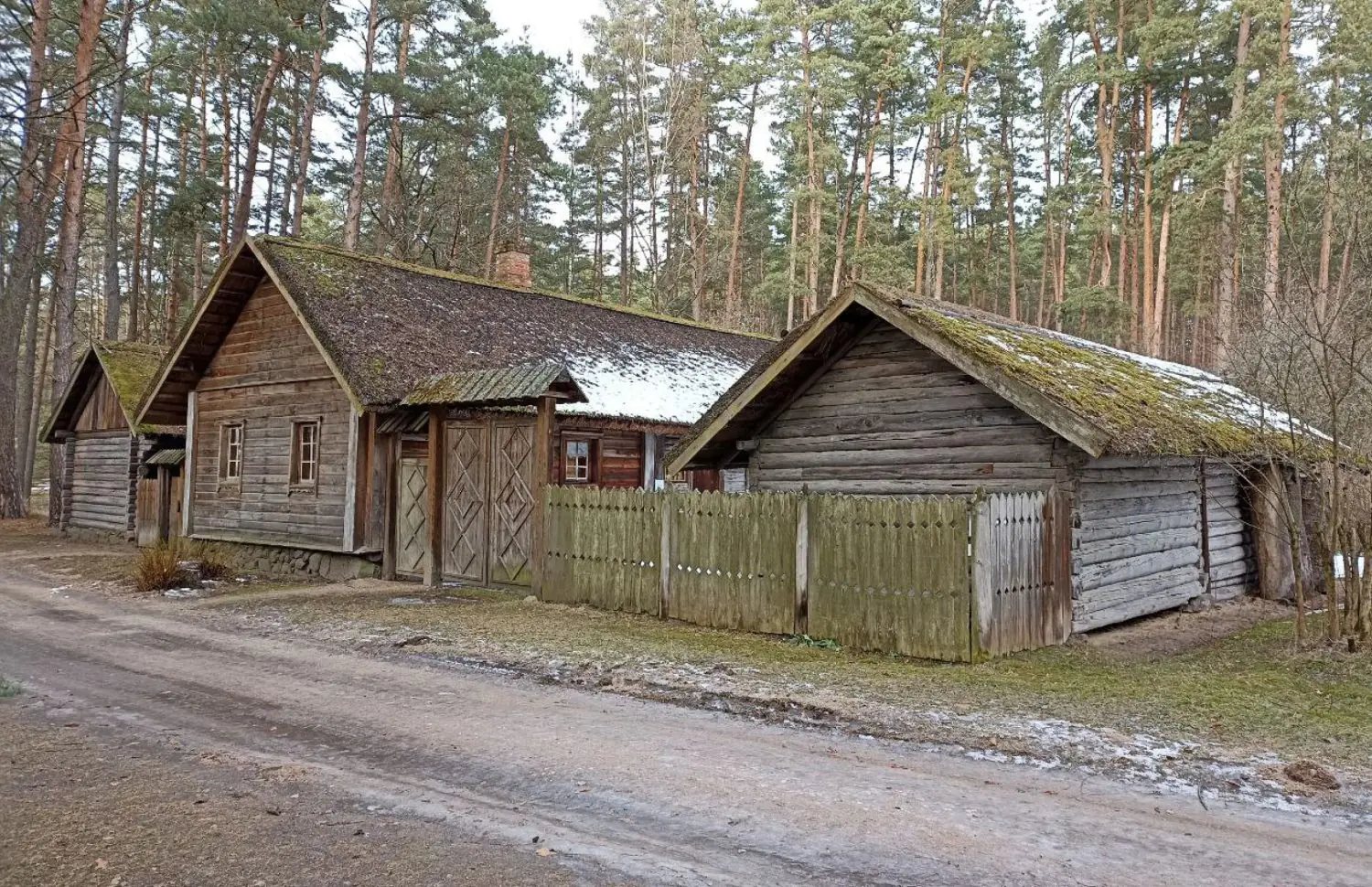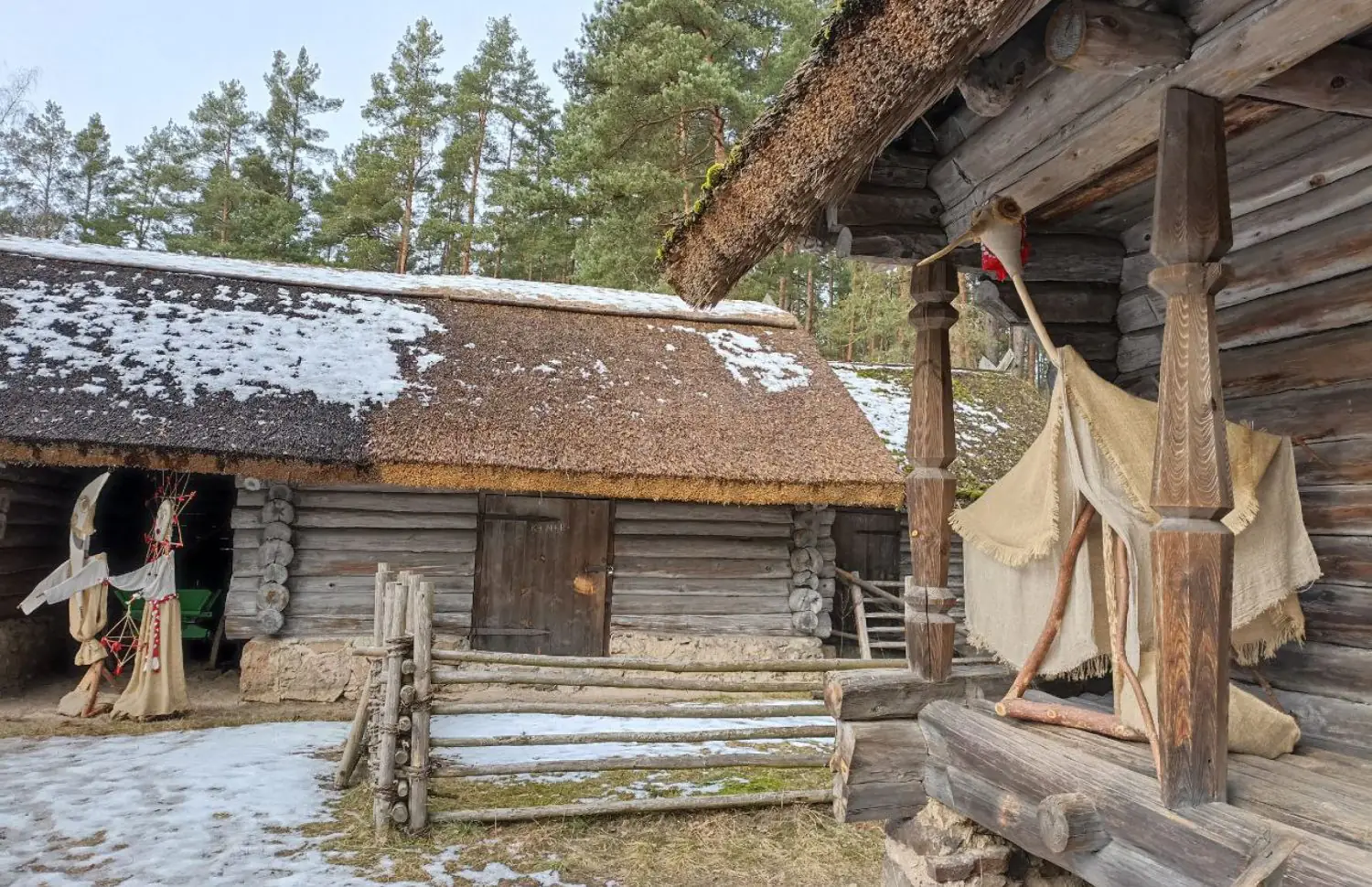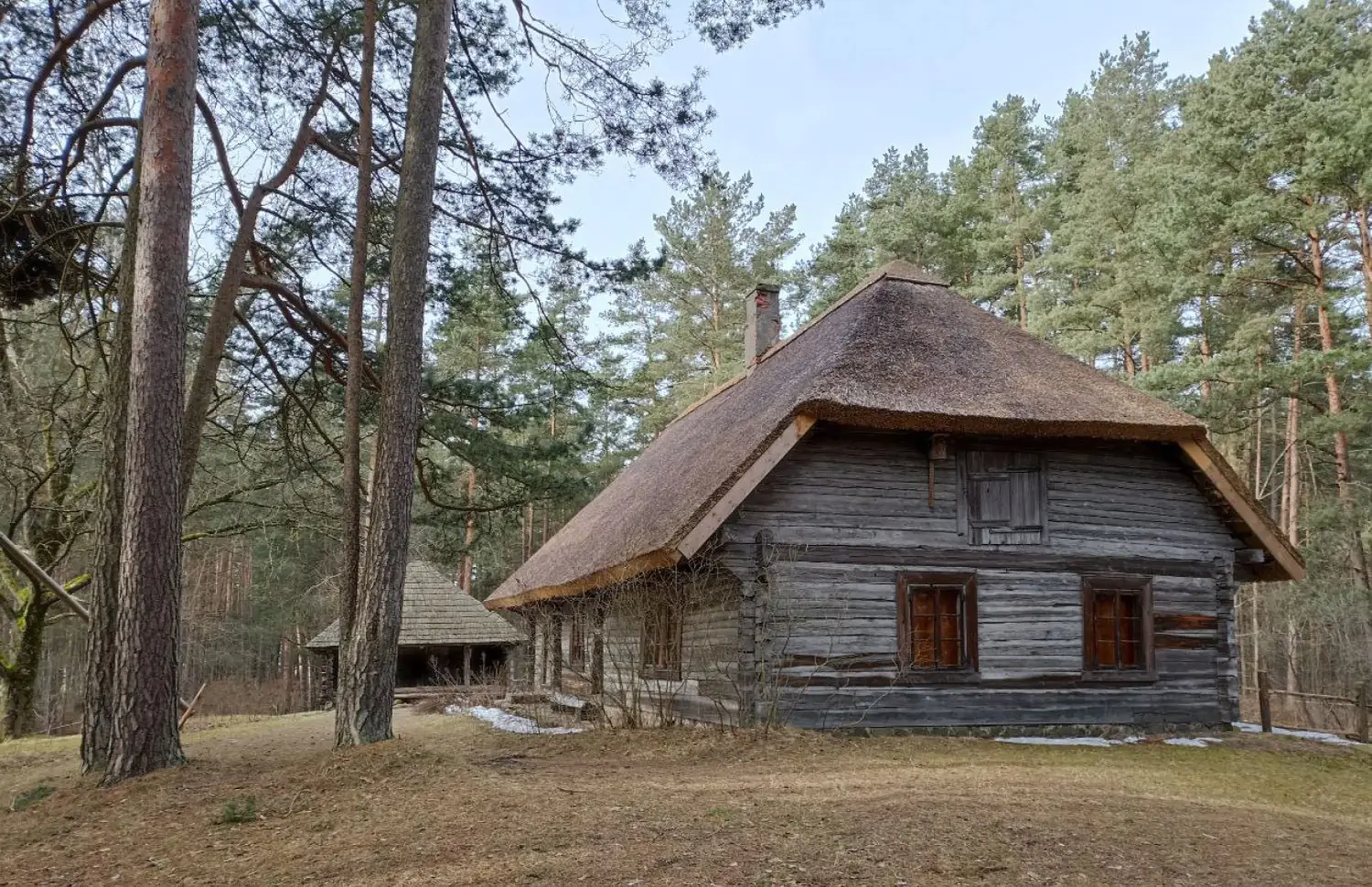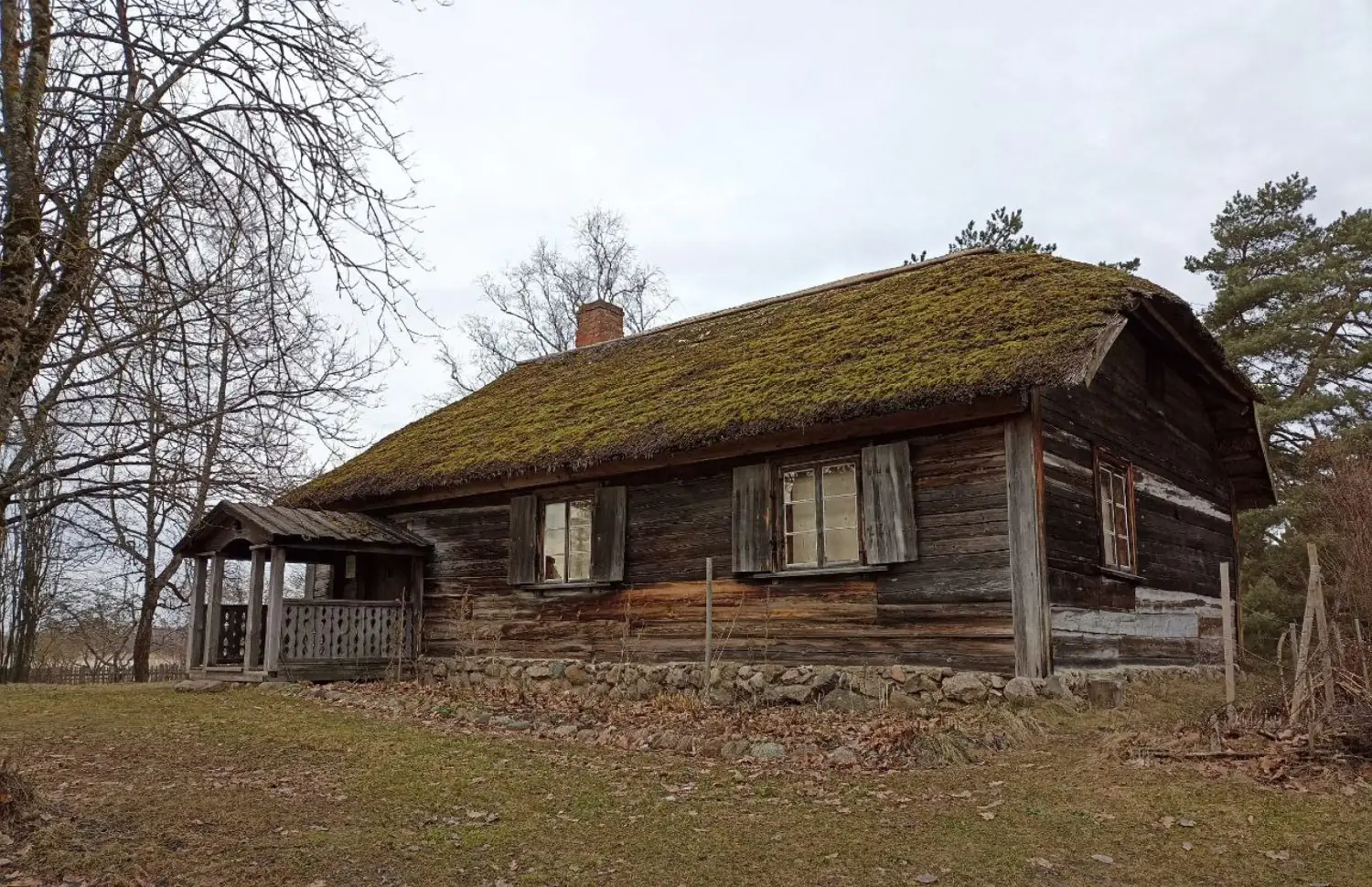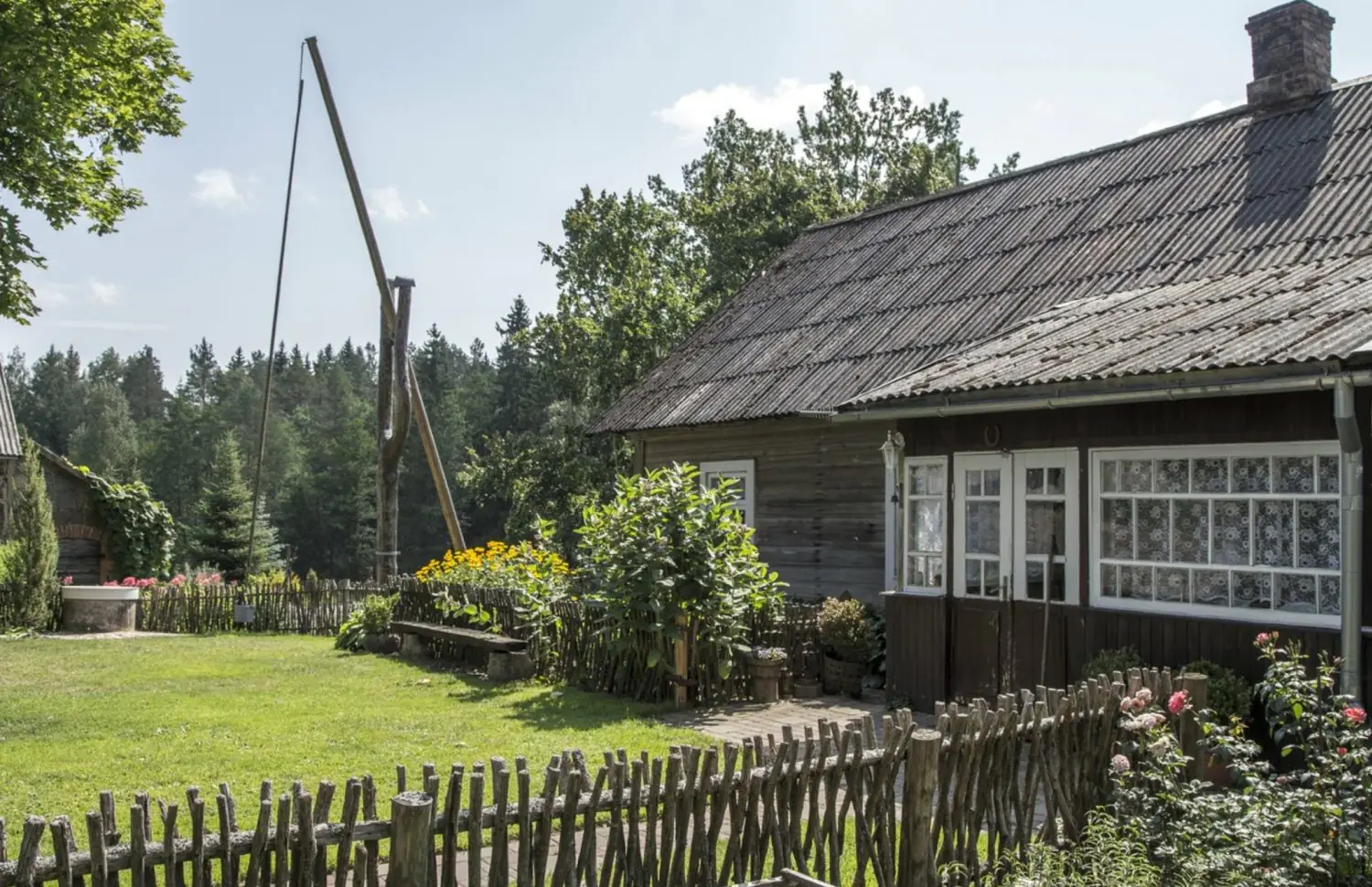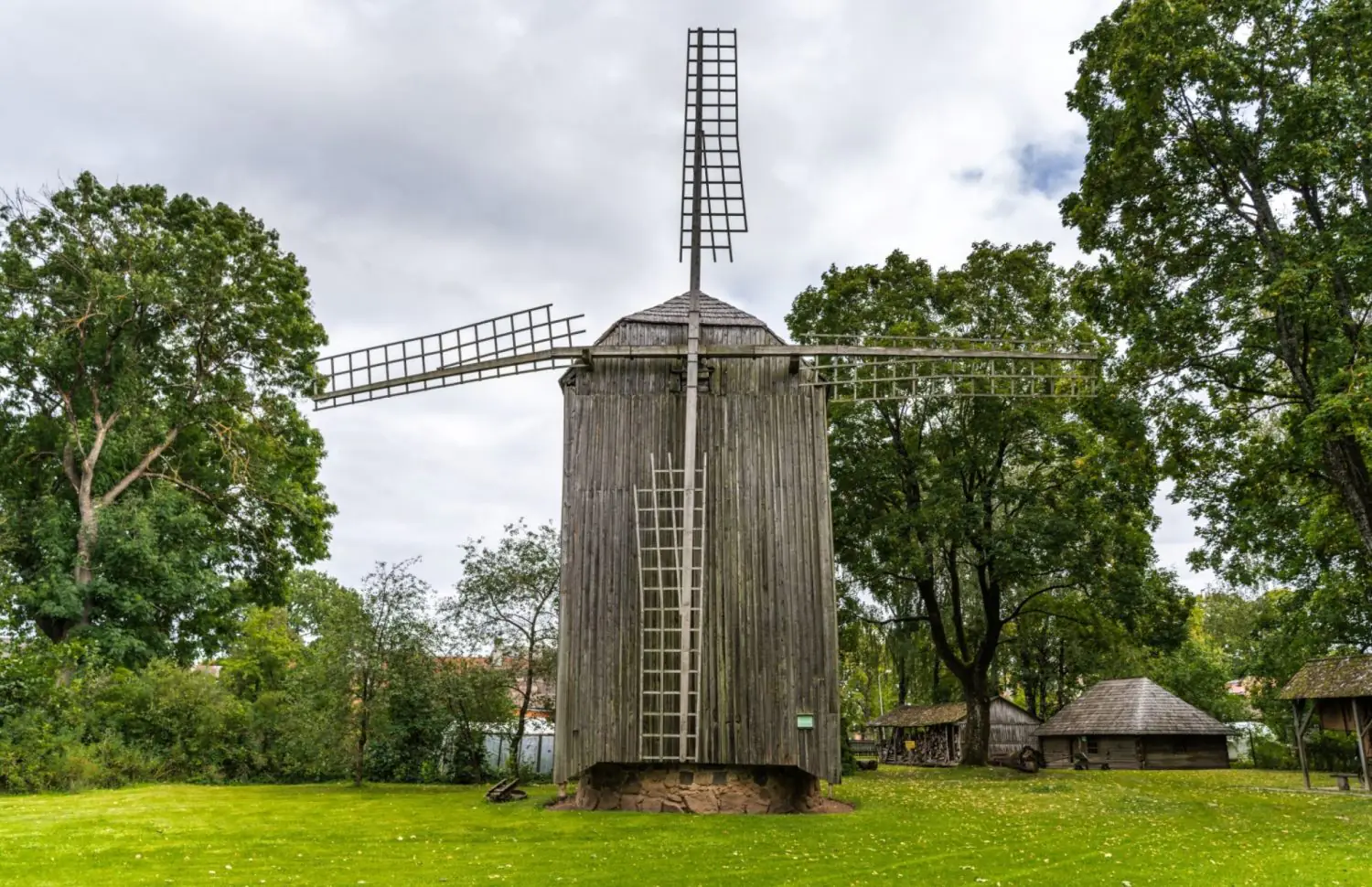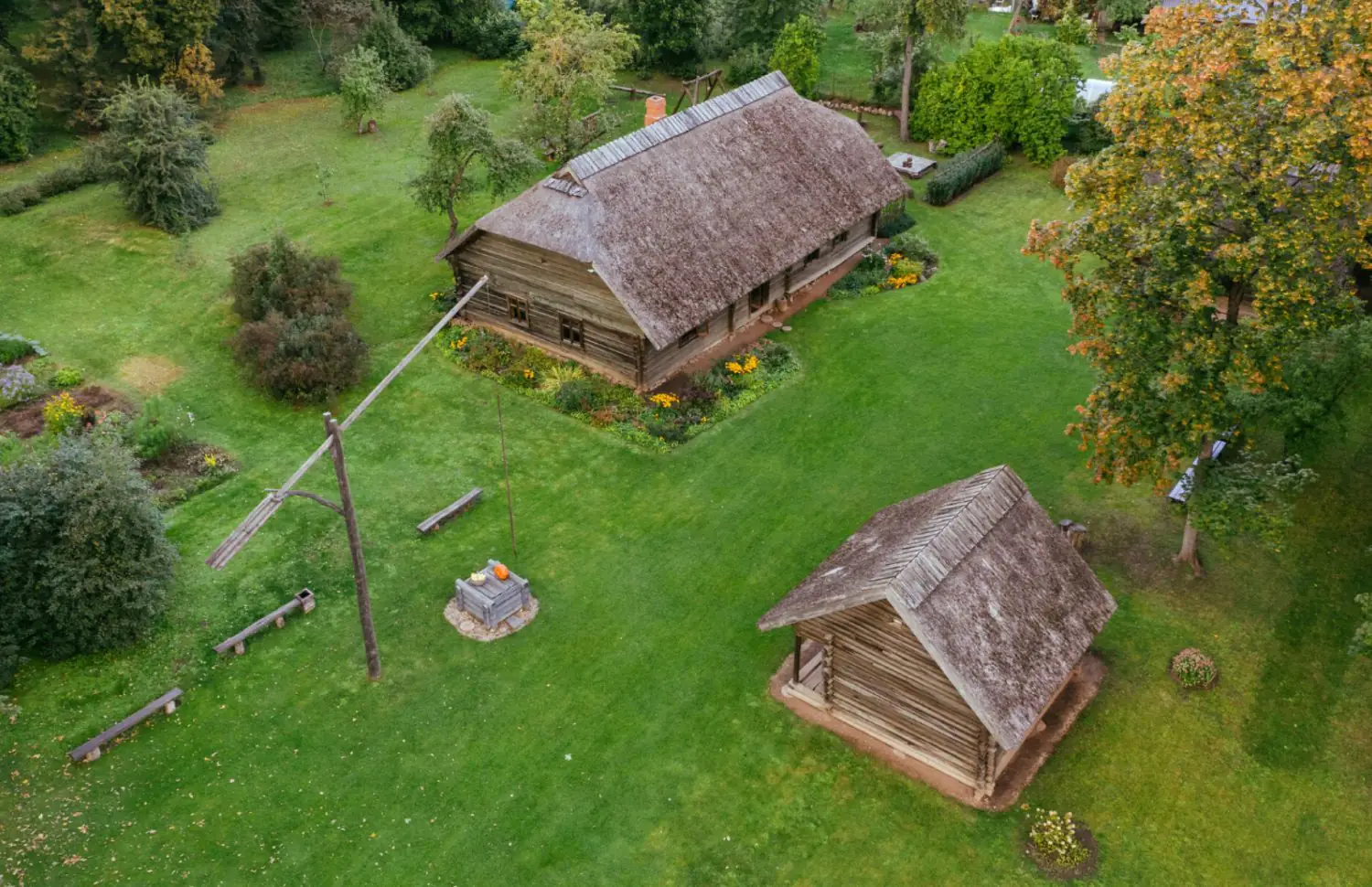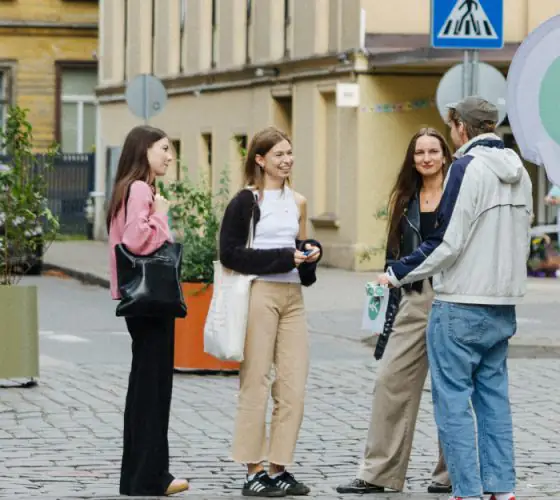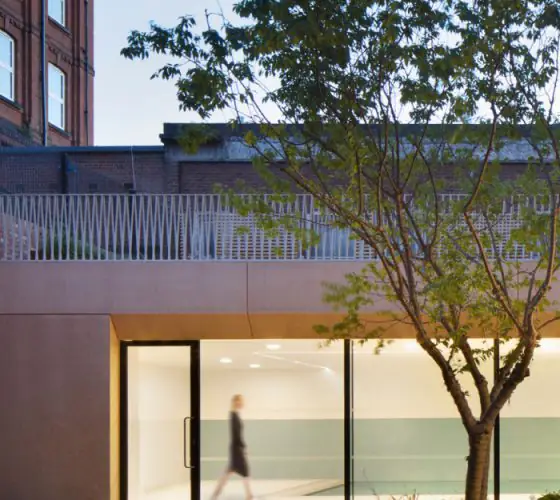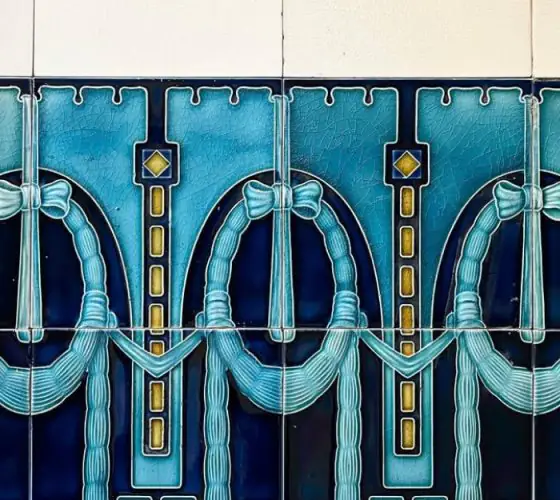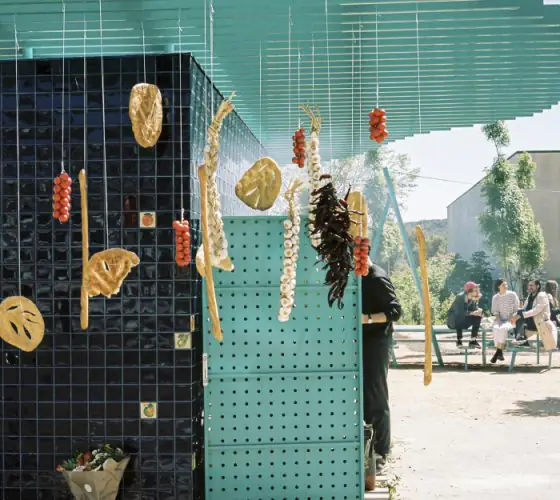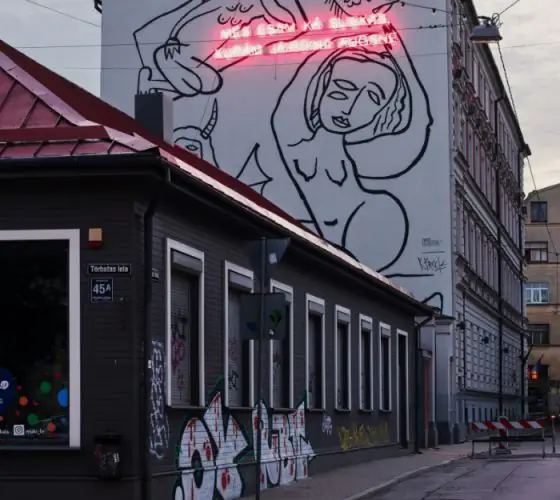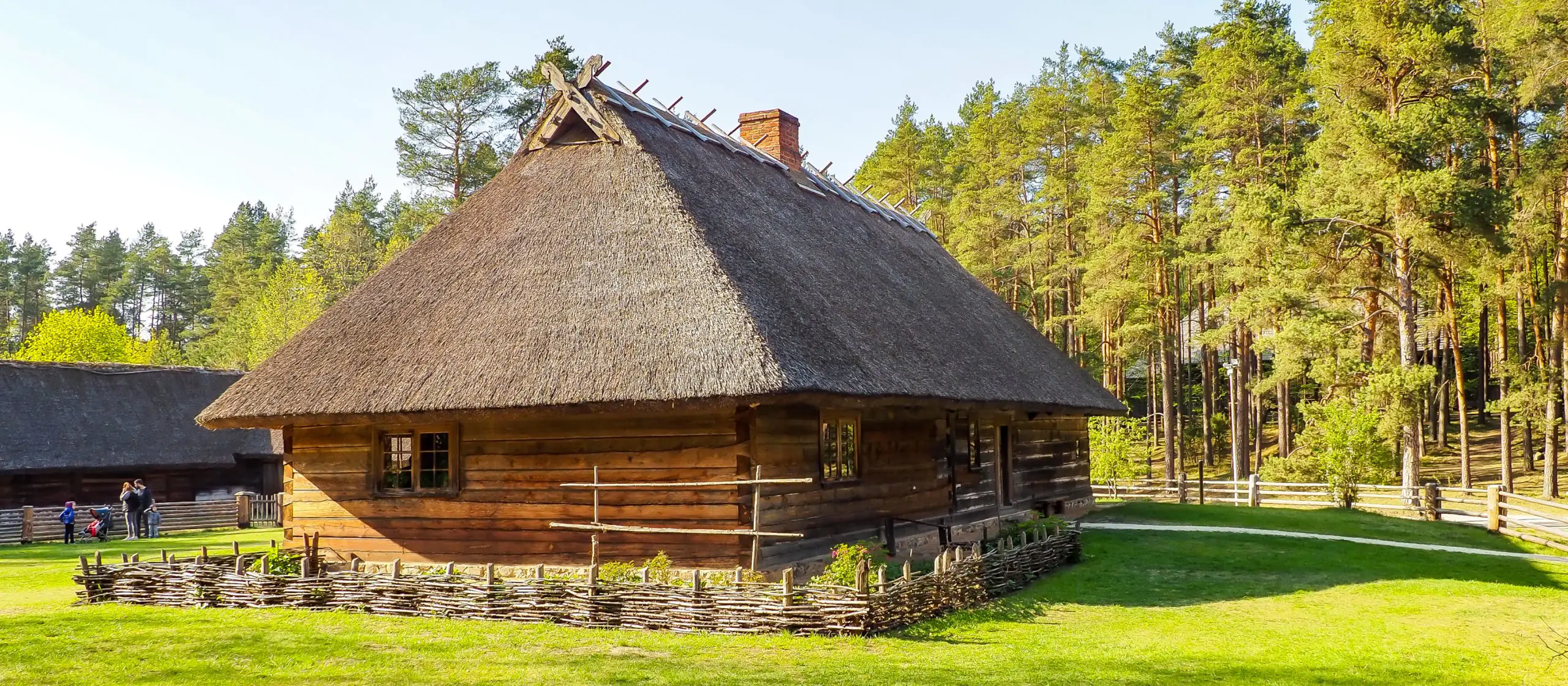
adobestock.com
The oldest fragments of wooden houses found in Latvia date back to the Mesolithic and Neolithic eras. To this day, wood is still actively used in building houses, making household items, musical instruments and works of art.
Rural Houses and Folk Traditions
Despite its relatively small size, Latvia is rich in a variety of folk building traditions. Along the shores of the Gulf of Riga and the lower Daugava River, the Livonians, whose main occupation was fishing, have long lived. The proximity to wide water spaces and the development of fisheries have influenced the functions and forms of their architecture.
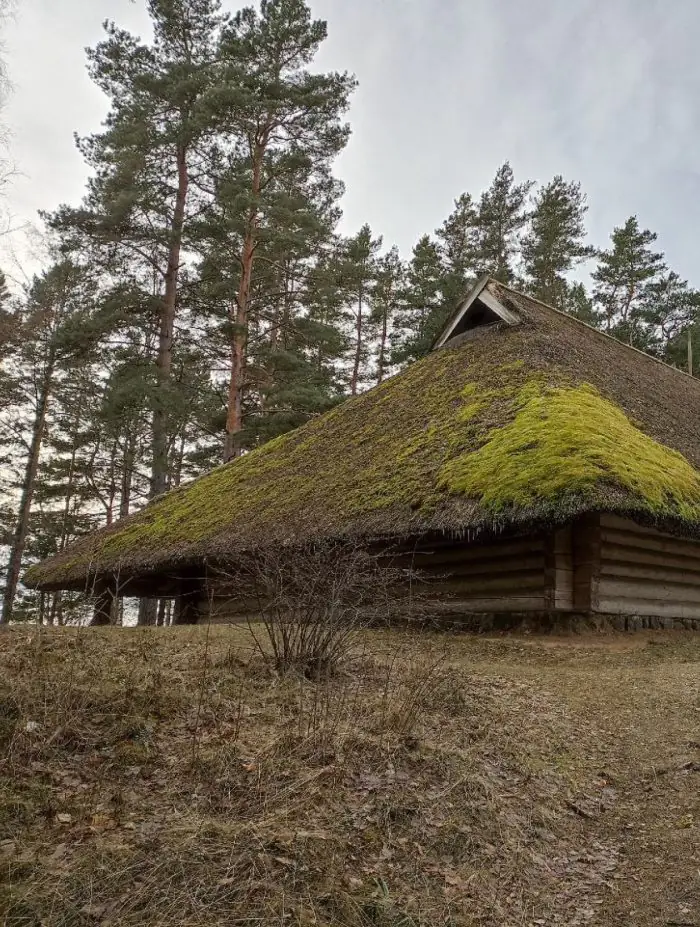
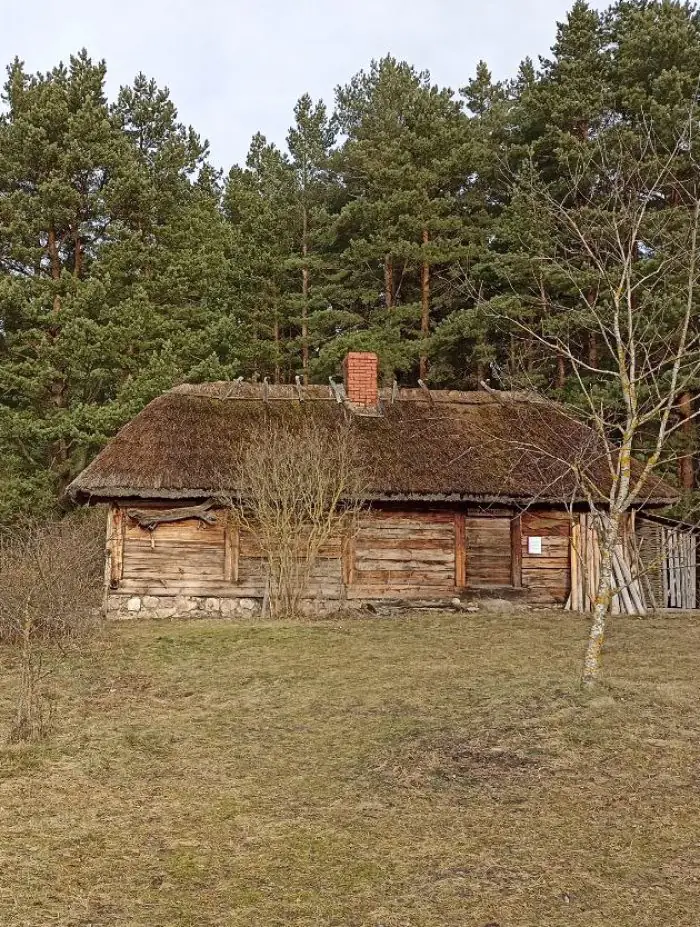
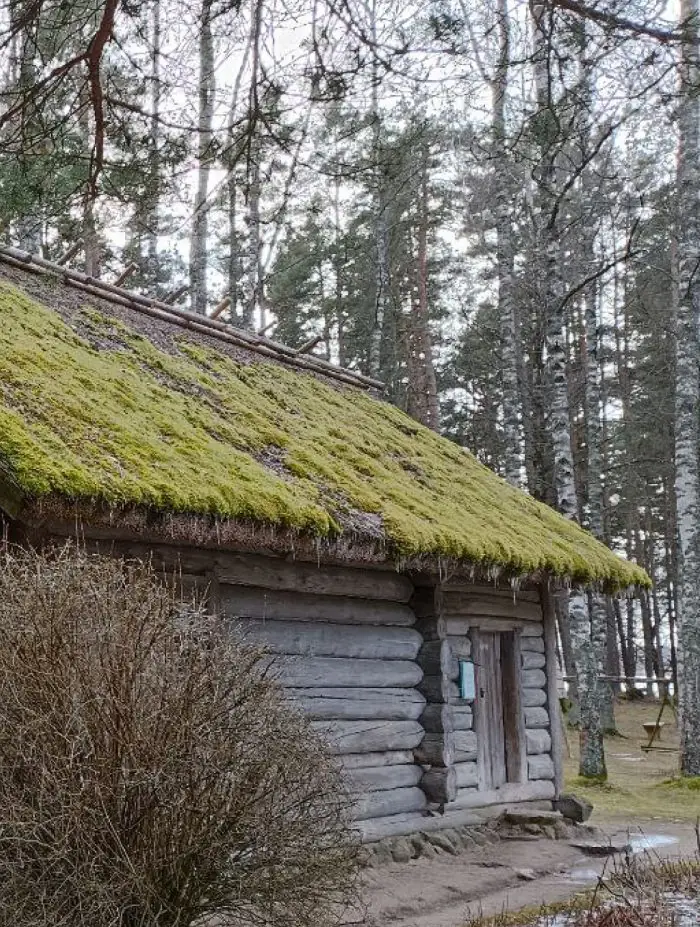
In the east of the country live the Latgalians, who have long been under the strong influence of Poland and Catholicism. Latgalian culture has also absorbed the traditions of Slavic peoples. The Old Believers, who fled to these lands from the territory of Russia after the church reforms of Patriarch Nikon, which began in the middle of the 17th century, are of great importance.
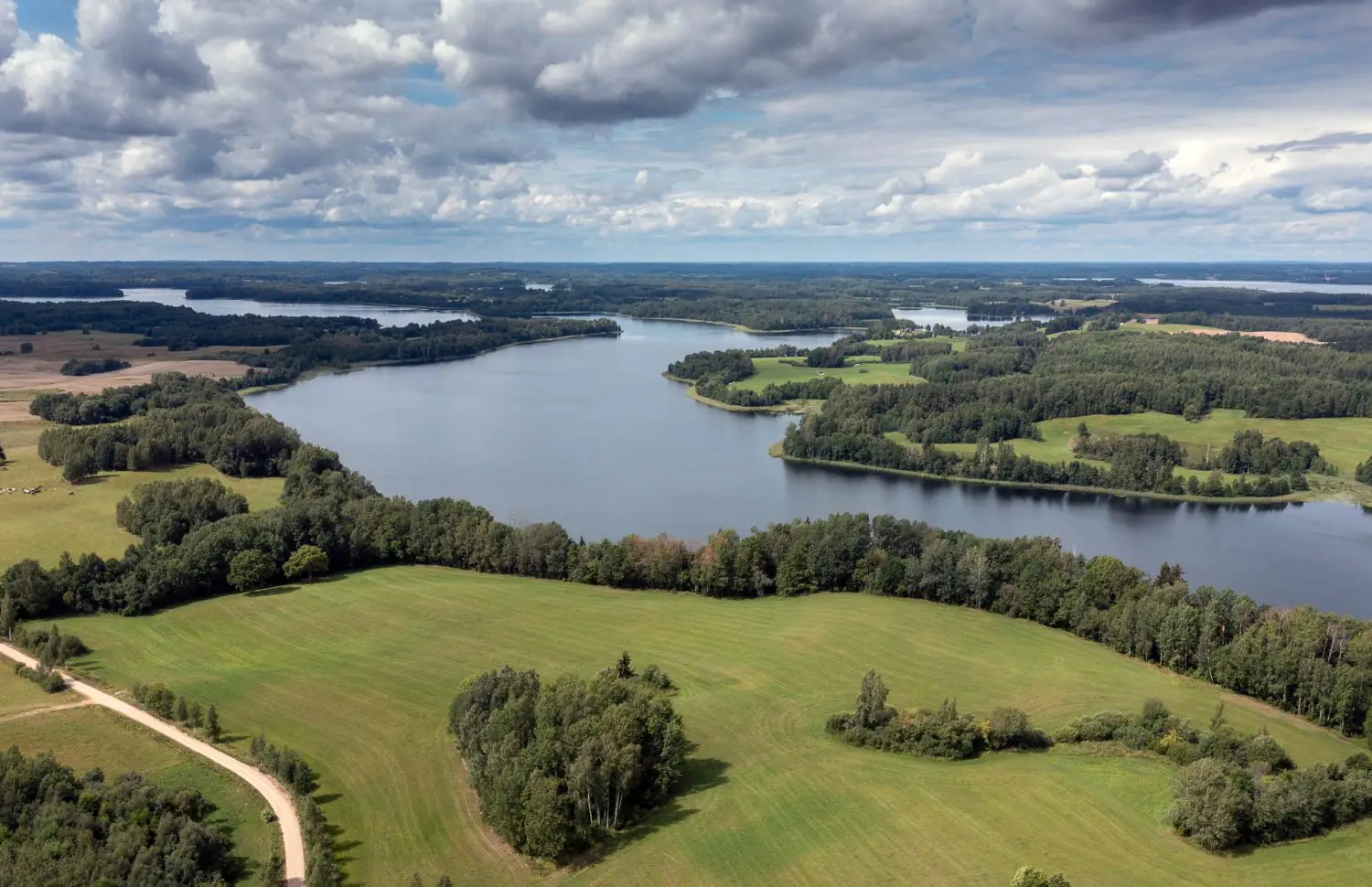
adobestock.com
The territory of Latgale from 1791 to 1917 was crossed by the Pale of Settlement—part of the repressive measures applied by the Russian Empire to the Jews. In essence, Latgale was a place where Jews of all class categories had the right to live. This diversity of cultures also greatly influenced the architectural features of the region. For example, unlike in the rest of Latvia, where detached farmsteads were more important, Latgale mainly developed a village type of settlement—houses and plots were located along several streets rather than in fields.
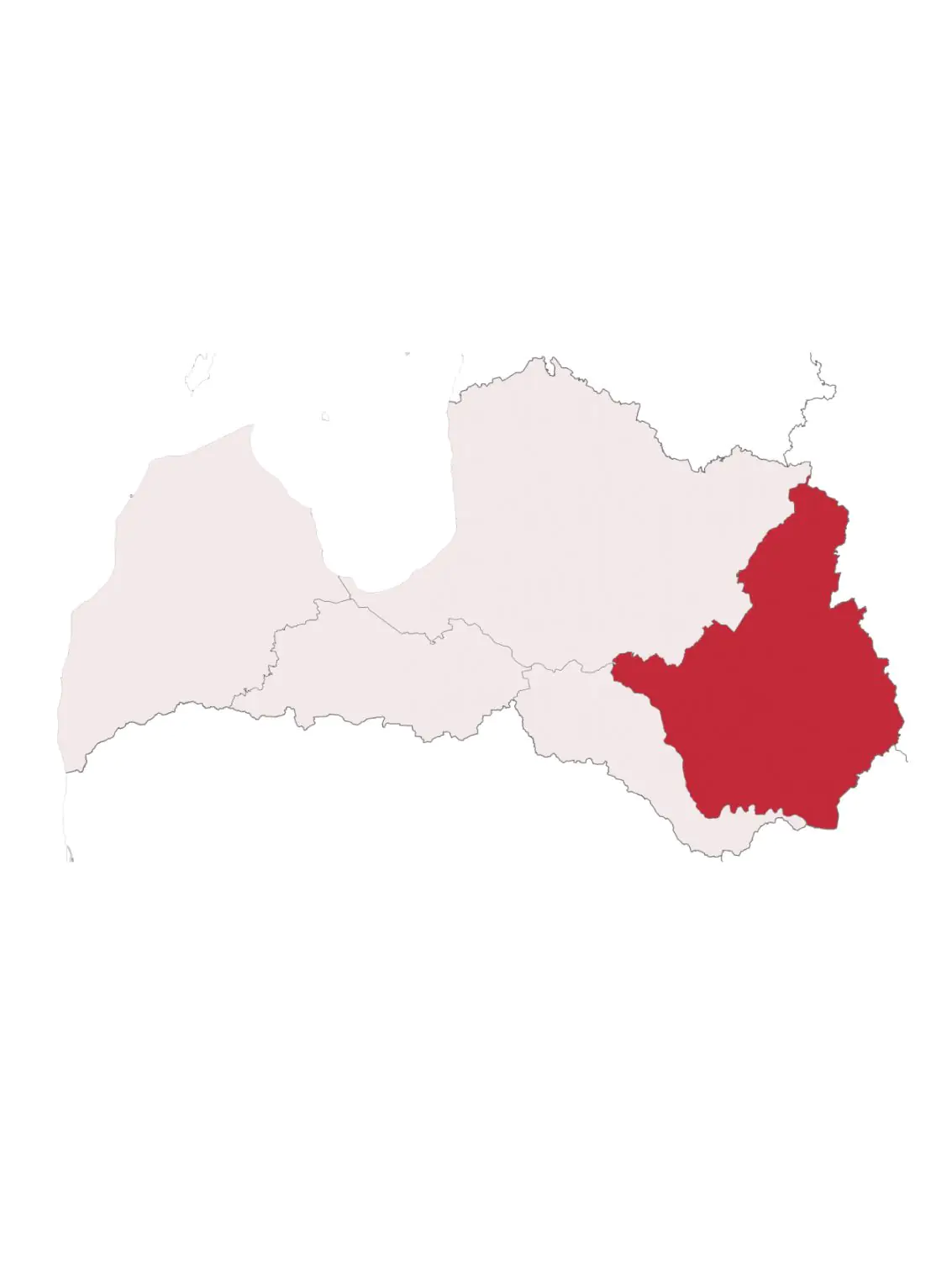
wikipedia.org
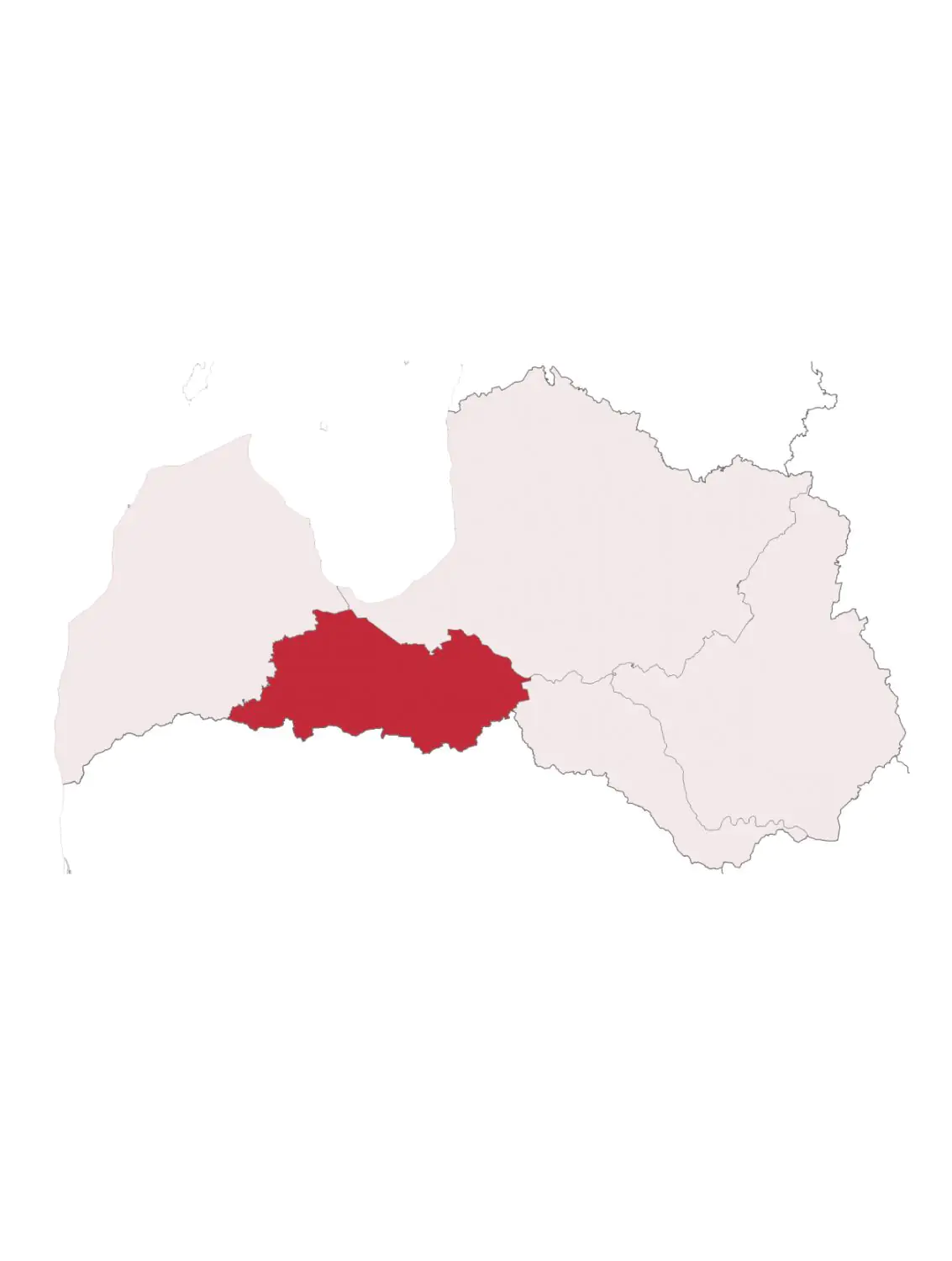
wikipedia.org
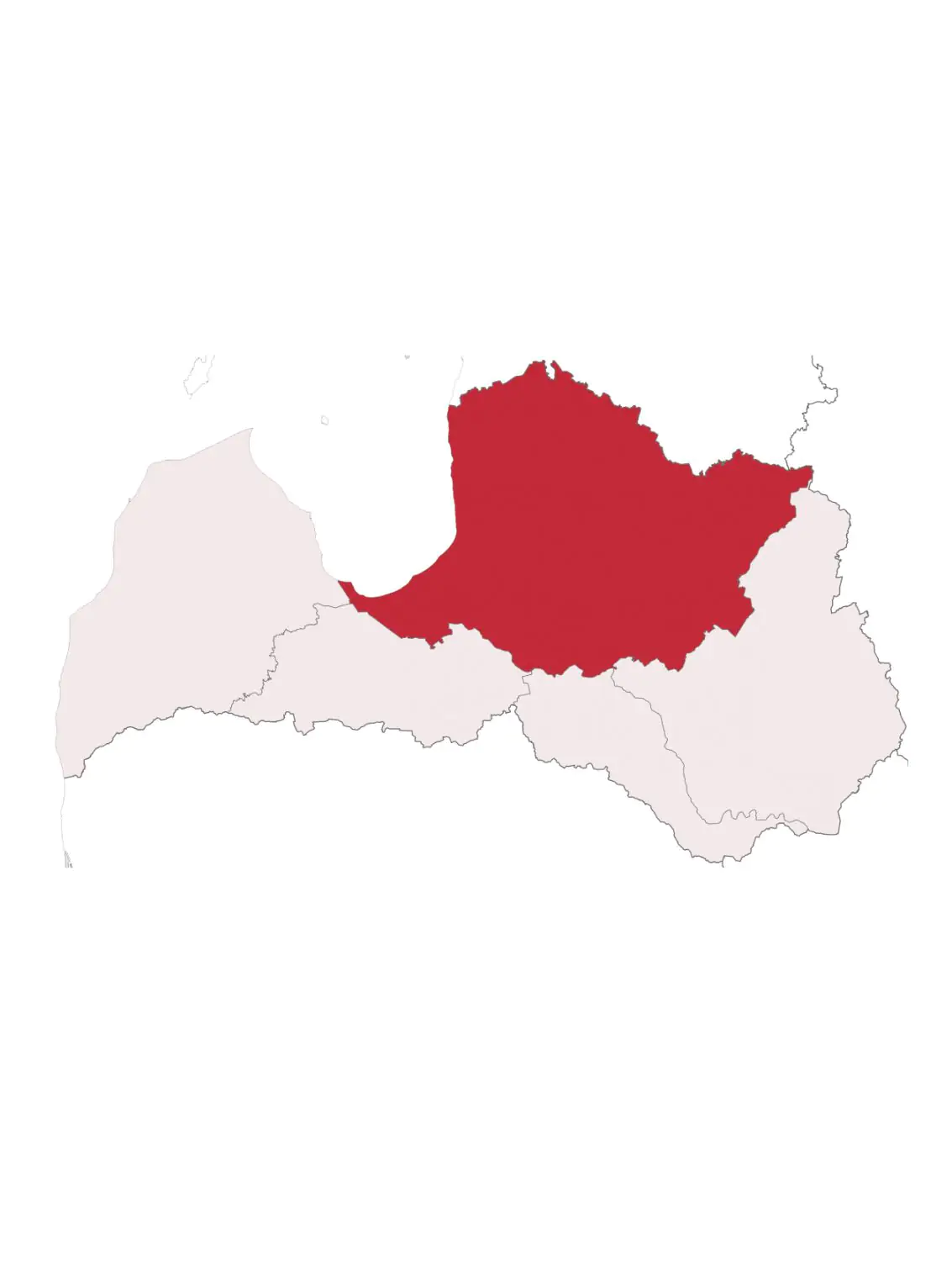
wikipedia.org
The differences between the vernacular architecture of Kurzeme, Zemgale, Sēlija and Vidzeme are noticeable. The first three regions from 1561 to 1795 were part of the vassal Duchy of Courland and Semigallia, subordinate to the Grand Duchy of Lithuania and then to the succeeding Polish–Lithuanian Commonwealth. But in fact the Duchy of Courland and Semigallia gained a significant share of independence and even fought for the right to have colonies (for example, on the island of Tobago). Ancient German dynasties had an important political significance here.
The history of Vidzeme differs significantly from the rest of Latvia. For a long time, Swedish rather than Lithuanian-Polish influence prevailed here. Later these lands were already in the beginning of the 18th century ceded to Russia as a result of the Great Northern War. Latgale, as well as the Duchy of Courland and Semigallia were ceded to the Russian Empire much later—only in the last third of the 18th century. The earlier Russian intervention and Swedish architectural traditions are important cultural and political factors that influenced wooden folk architecture.
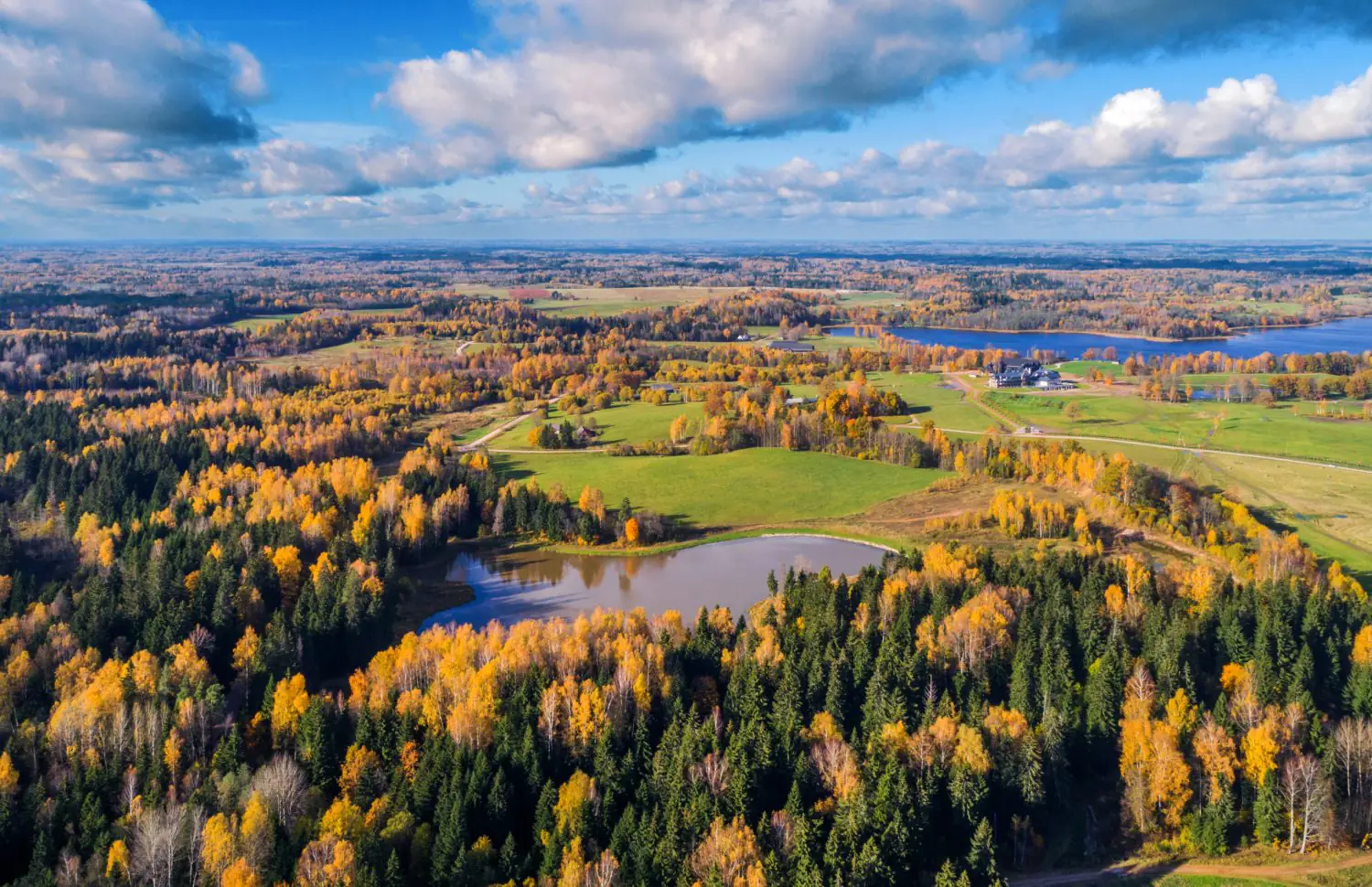
adobestock.com
In all regions of Latvia, coniferous woods are the most common in construction: pine, spruce, and, less frequently, juniper. It is easy to work with them, they are relatively light, soft and keep the heat in houses quite well. However, compared to denser woods such as oak or birch, structures made of these woods are less strong and durable.
The expensive and strong oak wood was more often used to make individual parts of buildings. For example, it was used in the creation of vertical axes for windmills—the most important structural elements.
In all regions of the country the forms of folk architecture and decorative elements were determined not only by their creators, but also by the tastes of the owners of this or that territory, from whom the peasants rented land, and in some historical periods were even in direct serfdom.
Nowadays, the most valuable examples of traditional wooden buildings are presented in several ethnographic open-air museums. Interesting buildings can also be found on farms, but they are often privately owned, which makes it difficult to get to know them.

openvirtualworlds.org
Latvia’s largest and oldest museum of folk wooden architecture is the Ethnographic Open-Air Museum of Latvia (Latvijas Etnogrāfiskais brīvdabas muzejs). It is located on the outskirts of Riga in a picturesque place. It was officially opened in 1924, but the first visitors could get acquainted with the exposition only in 1932. Now there are about 118 monuments of wooden architecture brought here for preservation from all over Latvia.
In one place you can get acquainted with the architectural diversity of four cultural and historical regions: Vidzeme, Latgale, Zemgale and Kurzeme—no separate thematic zone has been created for Sēlija yet.
The difference between Latgale buildings and other regions of Latvia is particularly well recognized here: the main entrance to private farms is oriented towards the village street, the buildings are quite close to each other, as they were located not on a spacious farm, but in a densely built-up area.
In modern Latgalian villages and towns one can still notice unique features of regional wooden architecture. For example, facades of local houses are more abundantly covered with decorations, especially window decorations. This can be explained by the influence of Russian-Belarusian traditions of Vitebsk Province, which Latgale was a part of from 1802 to 1918.
A small fishermen’s building for drying fish looks very peculiar. It is made of vertically placed hulks of old boats with a door in them. Inside, the catch hangs on hooks. The structure protects the fish from rain and creates the right conditions for its gradual drying.
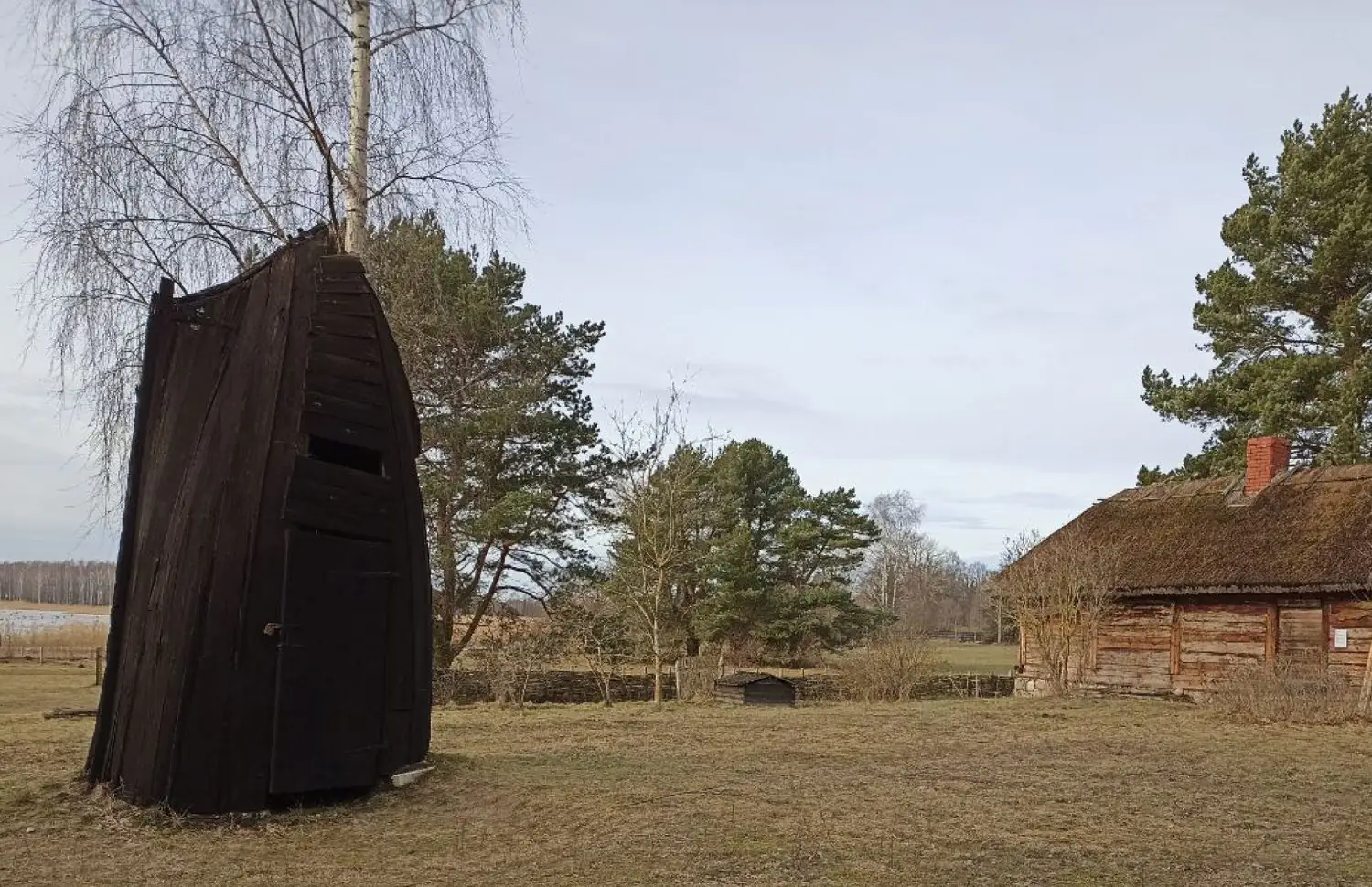
Latvian folk buildings in general (primarily in the regions of Vidzeme, Kurzeme, Zemgale and Sēlija) are characterized by so-called gable half-walm roofs. A walm is a triangular roof slope running from the ridge to the base of the roof. The half-walm, as a rule, goes from the top of the roof to its middle, but can be shorter or longer. This type of roof is widespread in the countries of Northern Europe, Austria, Slovenia, Germany and England. The shape of this roof is resistant to strong winds and has a recognizable expressive form with a bevel on the side facades.
The walm and half-walm roofs in Latvia were covered with protective materials characteristic of a particular region: for example, the inhabitants of coastal territories used a thick layer of thatch, which effectively drained moisture due to its tubular shape. Equally common was the covering of shingles — wooden tiles. Over time, such roofs were covered with moss, which made (and still does) them particularly spectacular. More affluent people used ceramic tiles for cladding.
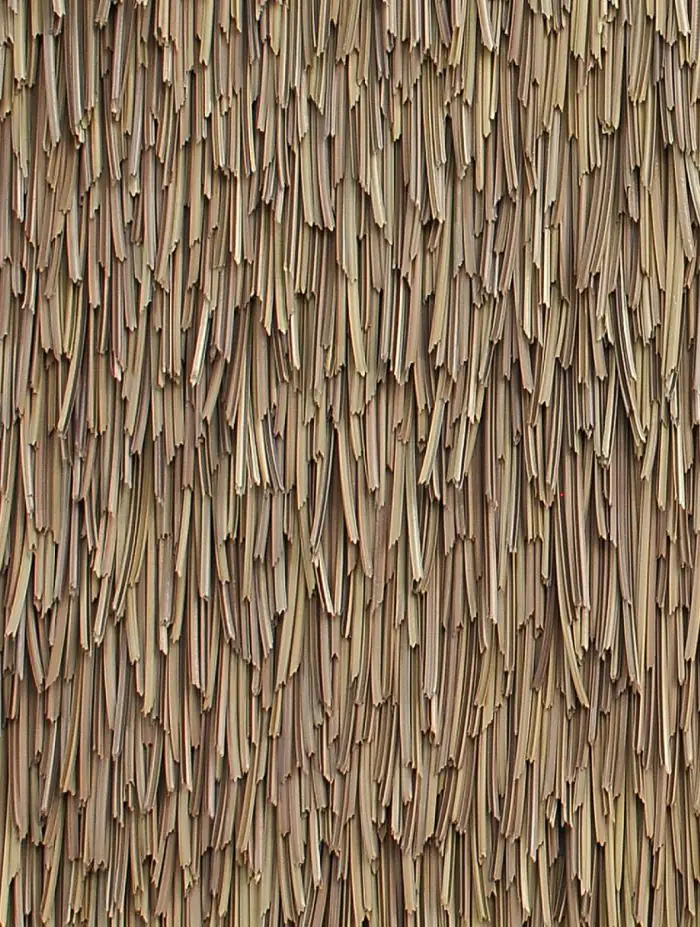
adobestock.com
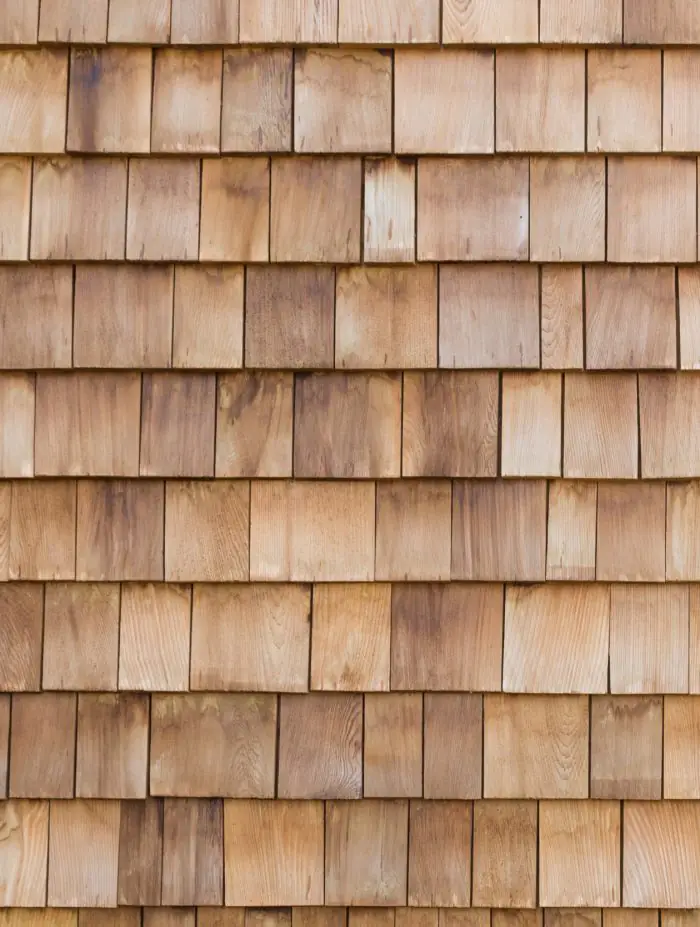
wooden shingles
adobestock.com
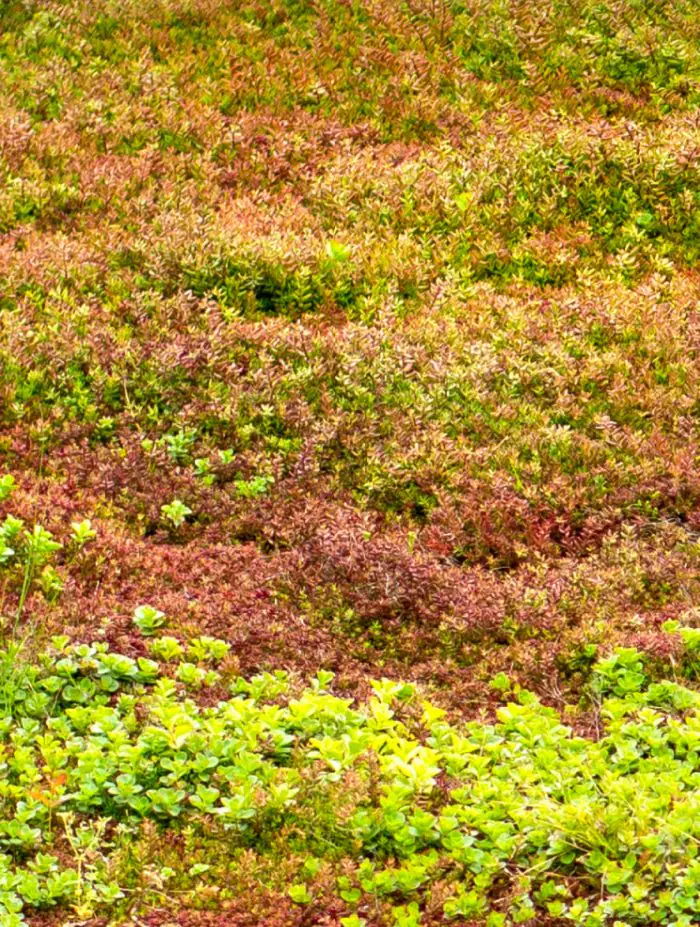
moss
adobestock.com
A gable half-walm roof is rather difficult to construct and therefore more expensive. For this reason, even in windy regions (for example the Liepāja area) simple gable forms are often found.
Among the other frequently encountered complex roof types is the half-walm four-pitched roof. It is characterized by a sharper dynamic of forms.

in the Ethnographic Open-Air Museum of Latvia
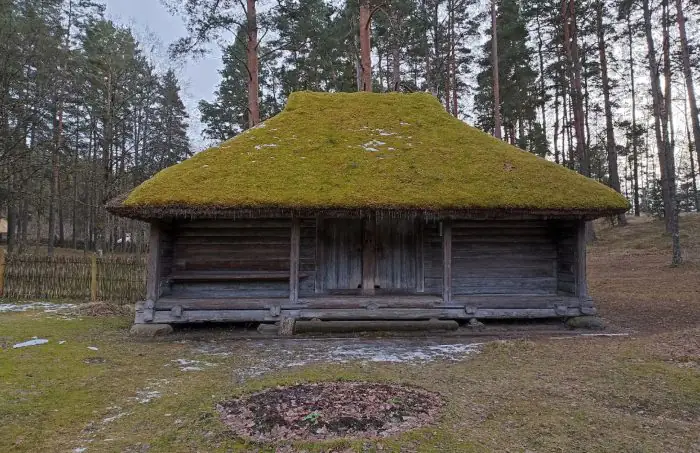
in the Ethnographic Open-Air Museum of Latvia
The roof in general has an important visual significance in Latvian architecture. Traditionally, in folk architecture it was assigned almost ⅔ of the building’s height. The characteristic designs of Latvian roofs were reinterpreted by postmodernists at the end of the 20th and beginning of the 21st century: they playfully interpreted regional peculiarities in a modern way — for example, the so-called row houses (popularly called “Ķīpsala’s Nest”) built in 1998–2001 by Juris Poga and Astra Poga on Ķīpsalas iela 9–39.
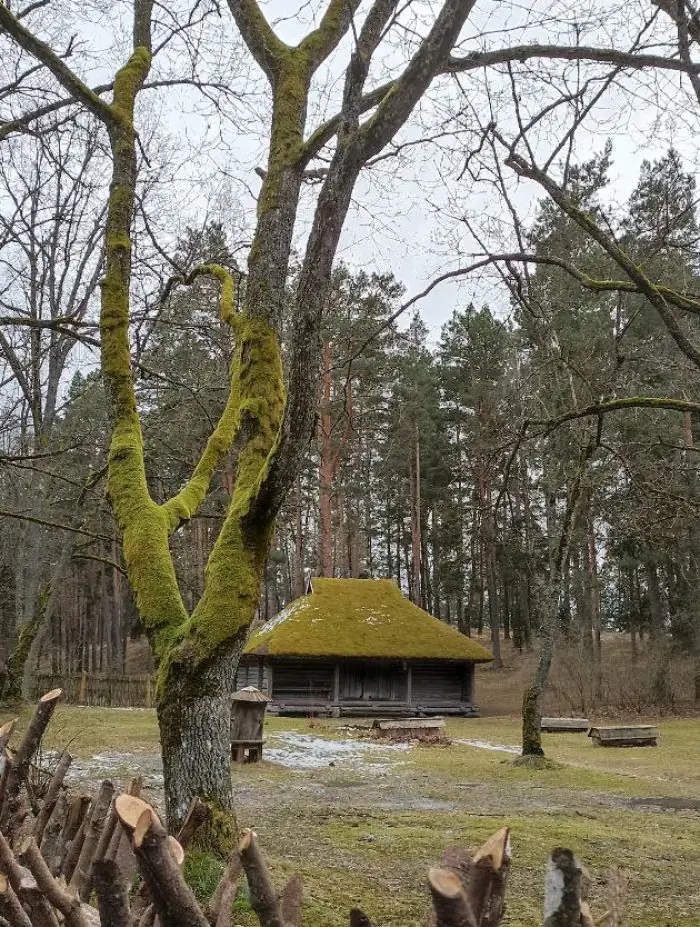
in the Ethnographic Open-Air Museum of Latvia
The most common type of buildings in rural Latvia were log buildings. Sometimes they were covered with flat planks on top—for protection from external influences and for decoration. There were also frame and lattice structures, such as the familiar German half-timbering. Wall decor was very ascetic, carved wooden details were used only in some details of buildings: porch railings, roof ridge, window framing and a few other places.
Religious buildings are of great value. For example, the Ethnographic Open-Air Museum of Latvia has a rare octagonal Catholic church built in 1815. Windmills add a special charm to the exposition.
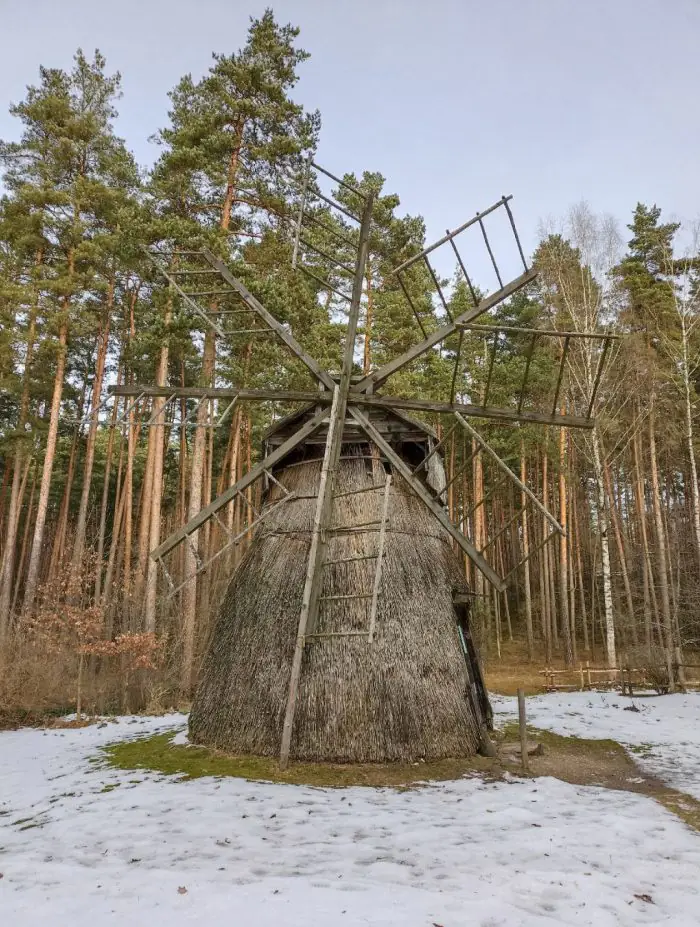
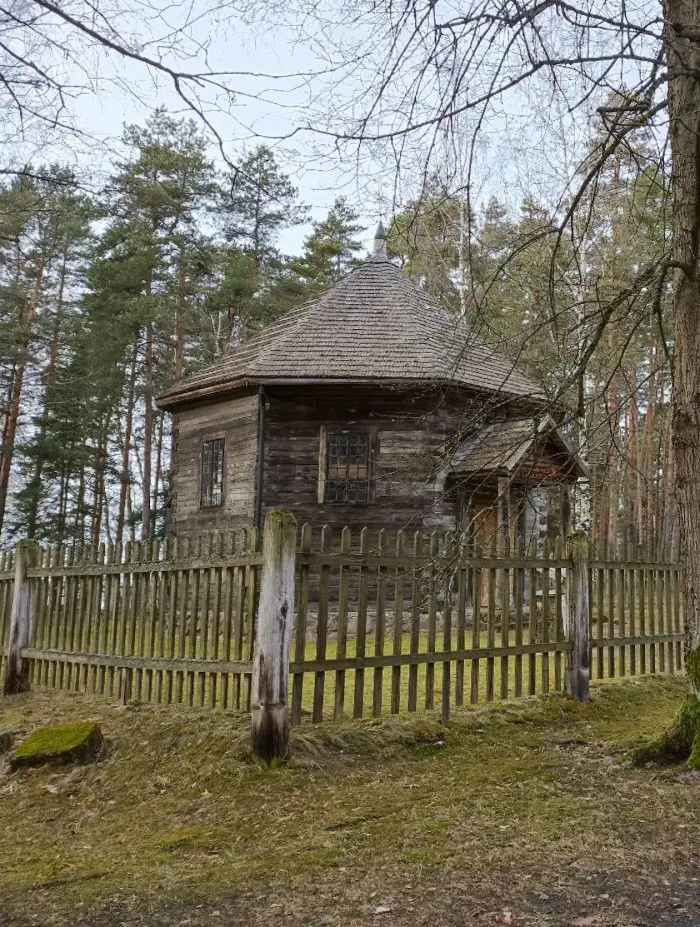
The Ethnographic Open-Air Museum of Latvia has two branches: Vēveri and Vītolnieki.
Vēveri is a settlement in Vidzeme, known since 1601. Here, far away from big cities, on a farm in the middle of hilly fields, lakes and forests, old wooden houses of local farmers and linen weavers have been preserved. What makes this museum especially valuable is that the buildings stand in their natural environment, not transported to a wooden architecture reserve, as in the Ethnographic Open-Air Museum of Latvia. Two local farms are still privately owned by those who inherited them from the first owners. At the highest point of the settlement a windmill was built in 1875, which was reconstructed in 2008.
In the west of the country, almost at the border with Lithuania, there is an open-air museum Vītolnieki, where fishermen and farmers buildings of the late 19th—first third of the 20th century have been preserved. Along the coast of the Gulf of Riga, there have been many settlements along the coast of the bay of Riga since ancient times, where fishing was the main occupation of the inhabitants. Many old wooden buildings have also been discovered in the Liepāja area—some of which have been moved to the Ethnographic Open-Air Museum of Latvia in Riga, but many buildings are still standing in their original locations.
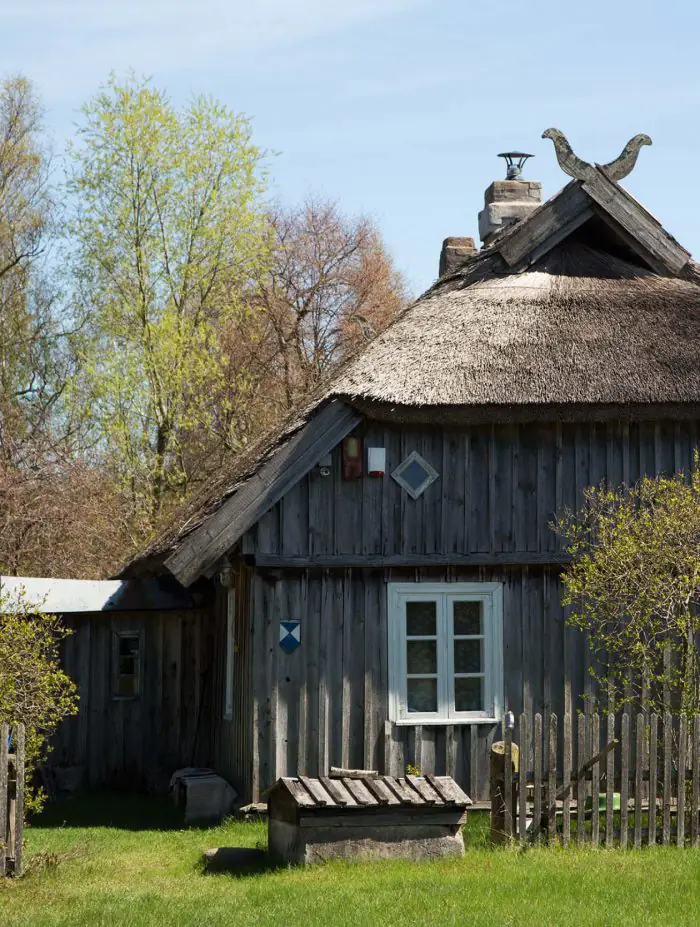
Photo: Miks Uzans
ainavudargumi.lv
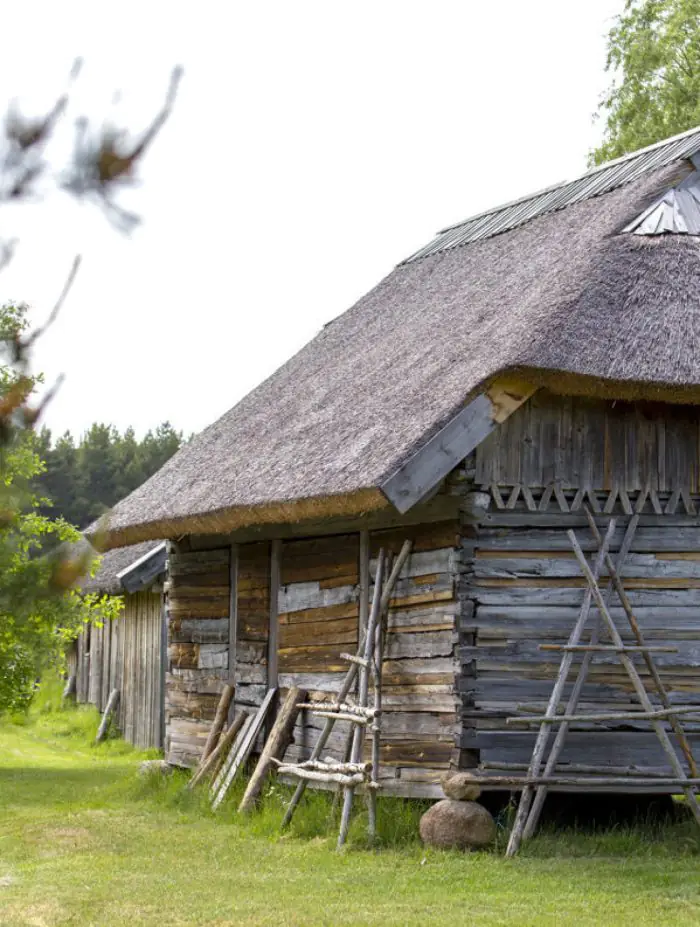
ienvidkurzeme.travel
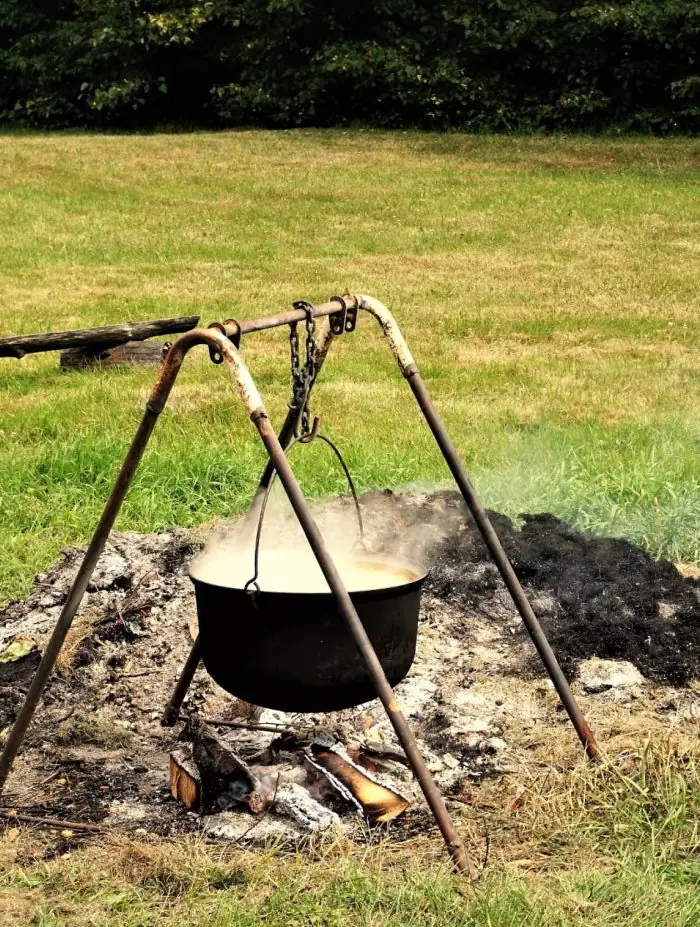
tripadvisor.com
There is also a collection of wooden buildings of fishermen and farmers from the Kurzeme region in Ventspils (Piejūras brīvdabas muzejs). On the territory of this museum there is a circular narrow-gauge railroad—part of the one that was built between the city and the fishing villages by the German occupation authorities during the World War I.
You can get acquainted with the traditional way of life of Latvian fishermen without going hundreds of kilometers away from Riga. There is an ethnographic museum in Jūrmala (Jūrmalas Brīvdabas muzejs), where you can learn what these places were like before the formation of the resort city in the 19th century.
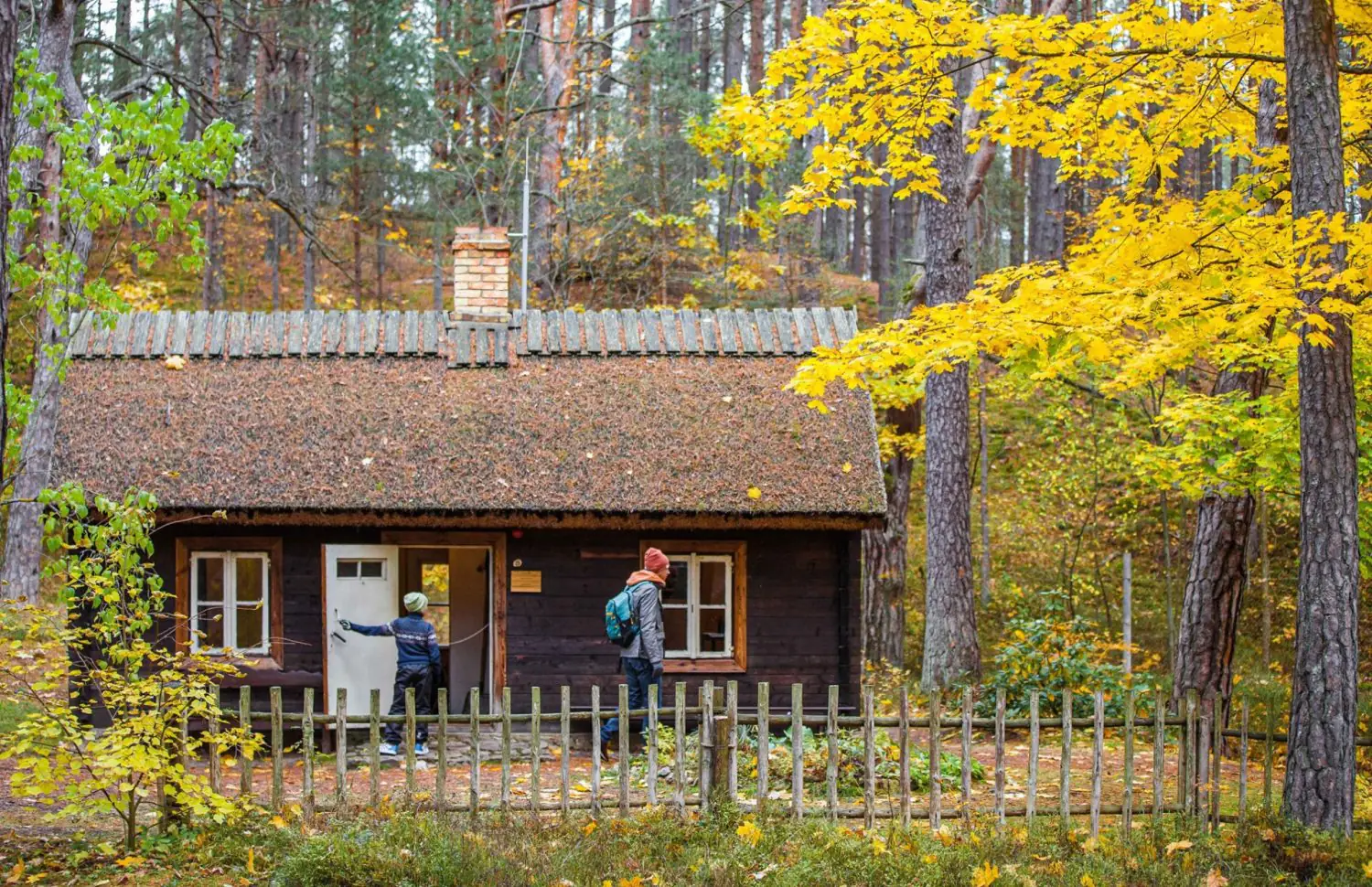
facebook.com
There are wooden dwelling houses, barns, a bathhouse and a smokehouse from the 19th and early 20th centuries. A significant part of the exposition is devoted to the collection of fishing boats, anchors and rope making accessories. The items and buildings were transported here from several fishing villages: Kauguri, Ragaciems and Engure.
Until the early 1990s, at the entrance to the museum stood the expressive building of the restaurant Laiva / Laivas (translated as “Boat / Boats”). Photographs from the late 1960s and 1980s show the hulks of boats decorating the main pavilion. This is an obvious reference to the fish-drying huts seen in ethnographic open-air museums.
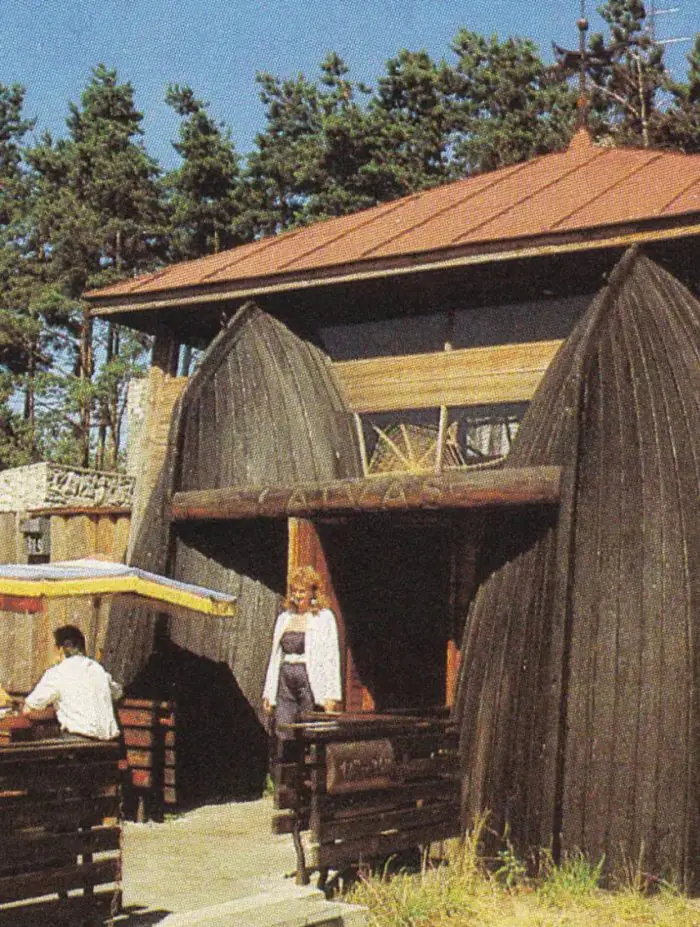
pastvu.com
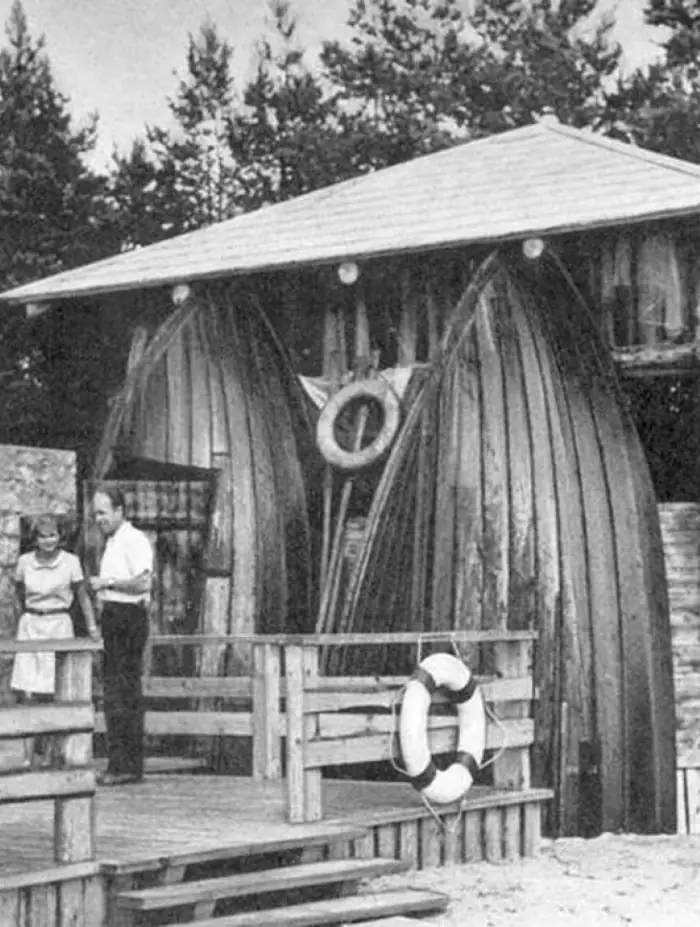
jurmalavest.wordpress.com

jurmalavest.wordpress.com
Another small wooden architecture museum Sēļu sēta with several houses, outbuildings and a windmill is located in Jēkabpils. In this exposition the emphasis is on the architecture of the cultural and historical region of Sēlija. On the left bank of the River Daugava in the past lived the Selonians, an ancient tribe, traces of which are found in Latvia and Lithuania. Despite the fact that the Selonian language no longer exists and relatively little is known about the life of the ancient people: the last records of the villages as a people date back to the 14th–15th centuries, but the locals do not forget the culture of their ancestors.
The buildings of the 19th century, presented in the open-air museum, have a very distant connection with the architecture of ancient villages. But they have some special features: oak, spruce or pine logs were chosen for the main house, and to scare away evil spirits, crosses were carved in its corners and sometimes under the door jambs. If these crosses were also made of rosewood, the building was considered completely safe.
You can get acquainted with the life of Latgalian Old Believers in the village of Slutišķi in a picturesque place on the winding banks of the Daugava River in Krāslava Municipality. The construction of local buildings is based on a quadrangular wooden log cabin covered with a simple gable or four-pitched roof. The facade carvings are similar to the traditional Slavic settlements decoration: expressive design of windows and doors. When choosing decorations, masters were guided by the canon and their imagination, and the individuality of each building was important.
Wooden architecture of eastern Latgale is presented in the ethnographic open-air museum in Ludza. The buildings of the beginning of 19th—middle of 20th century were transported here. The picturesque location between the Small and Big Lakes of Ludza gives a special charm to the exposition.
In modern architecture, folk traditions are reinterpreted in a very interesting way by Andris Kronbergs, whose designs are marked by references to peasant farm buildings: barns and warehouses. His works were included in the Latvia’s Cultural Canon for their distinctive creative language.
At the turn of the 1980s–1990s, Zaiga Gaile, Ausma Skujiņa, Ģirts Ādminis, Zintis Butāns, Ivars Šļivka, and Raitis Jelēvičs formed the «Māja» group of architects, whose purpose was to conceptualize and comprehend vernacular architecture. In those years, a renaissance of Latvian self-identity was taking place against the backdrop of the struggle for independence from the Soviet Union. The members of the group created spatial installations at exhibitions in Tallinn and Riga.
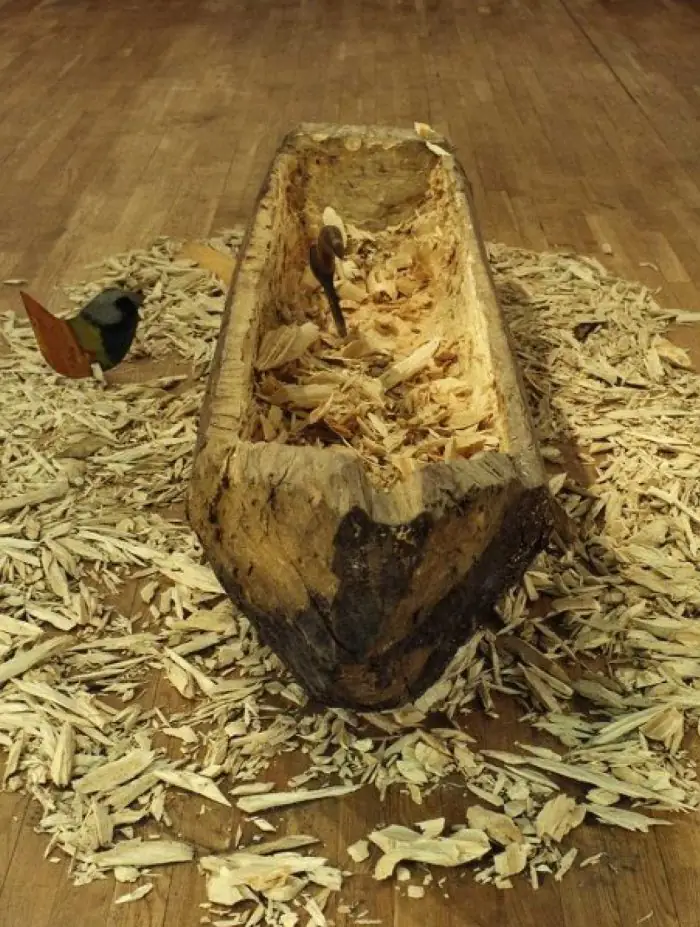
lsm.lv

lsm.lv
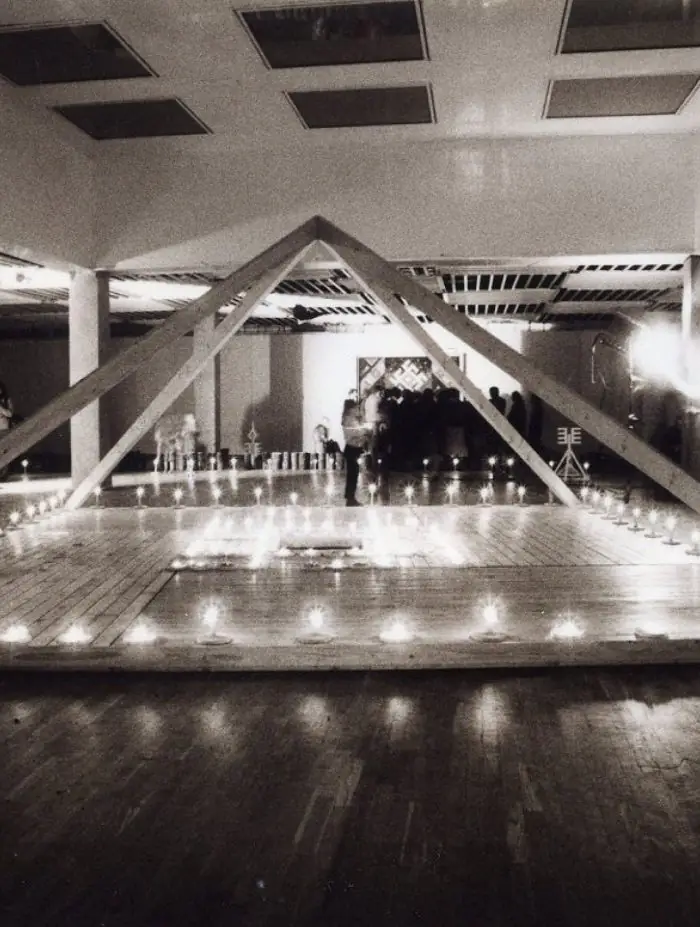
lsm.lv
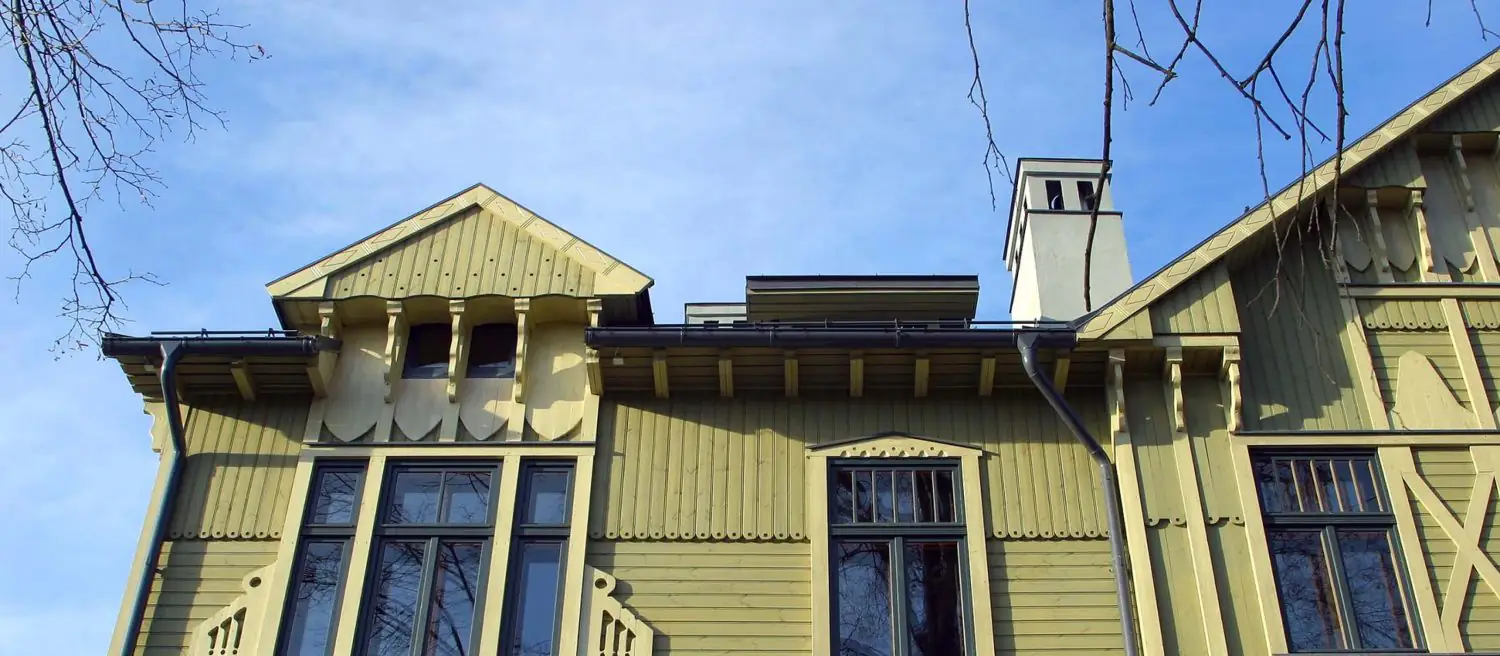
zgb.lv
City Houses
On the territory of Riga and some other Latvian cities wooden buildings of the 18th—early 20th centuries have been preserved. Wood has been used in urban construction before, but these are the earliest surviving buildings.
During the times of the Republic of Latvia and the Soviet occupation, wooden construction continued to develop, and new types of buildings appeared. For example, from the end of the 1970s until Latvia’s secession from the Soviet Union, typical individual houses made of particleboard were produced at the Livani House-Building Plant. We wrote about them in detail in our guide to the city of Līvāni.
It is interesting that many elements of folk architecture in rural areas take their roots in urban construction. Not only in Latvia, but also in many other countries, inhabitants of villages, farms and other small settlements are often inspired by the conventionally elitist metropolitan architecture and manor houses.
Some traditionally stone decorative elements (columns, rustication, keystone) in folk architecture were made of wood. It is fair to say that urban wooden construction is also characterized by such borrowings. Here it is more correct to speak about the influence of large styles—for example, Classicism, Baroque, Jugendstil—on wooden architecture. It is logical that buildings in these styles initially appear in large cities or estates, and then gradually spread further.
Ķīpsala Island in Riga became a kind of sanctuary of urban wooden architecture in the 2000s. Not only local houses were restored here, but also buildings from other Riga districts were transported here under the pretext of preserving them. In most cases this was done by the architectural company Zaigas Gailes Birojs, named after Zaiga Gaile. She and her husband Māris Gailis, a well-known Latvian politician, businessman and traveler, worked extensively on the reconstruction of Riga’s wooden heritage.
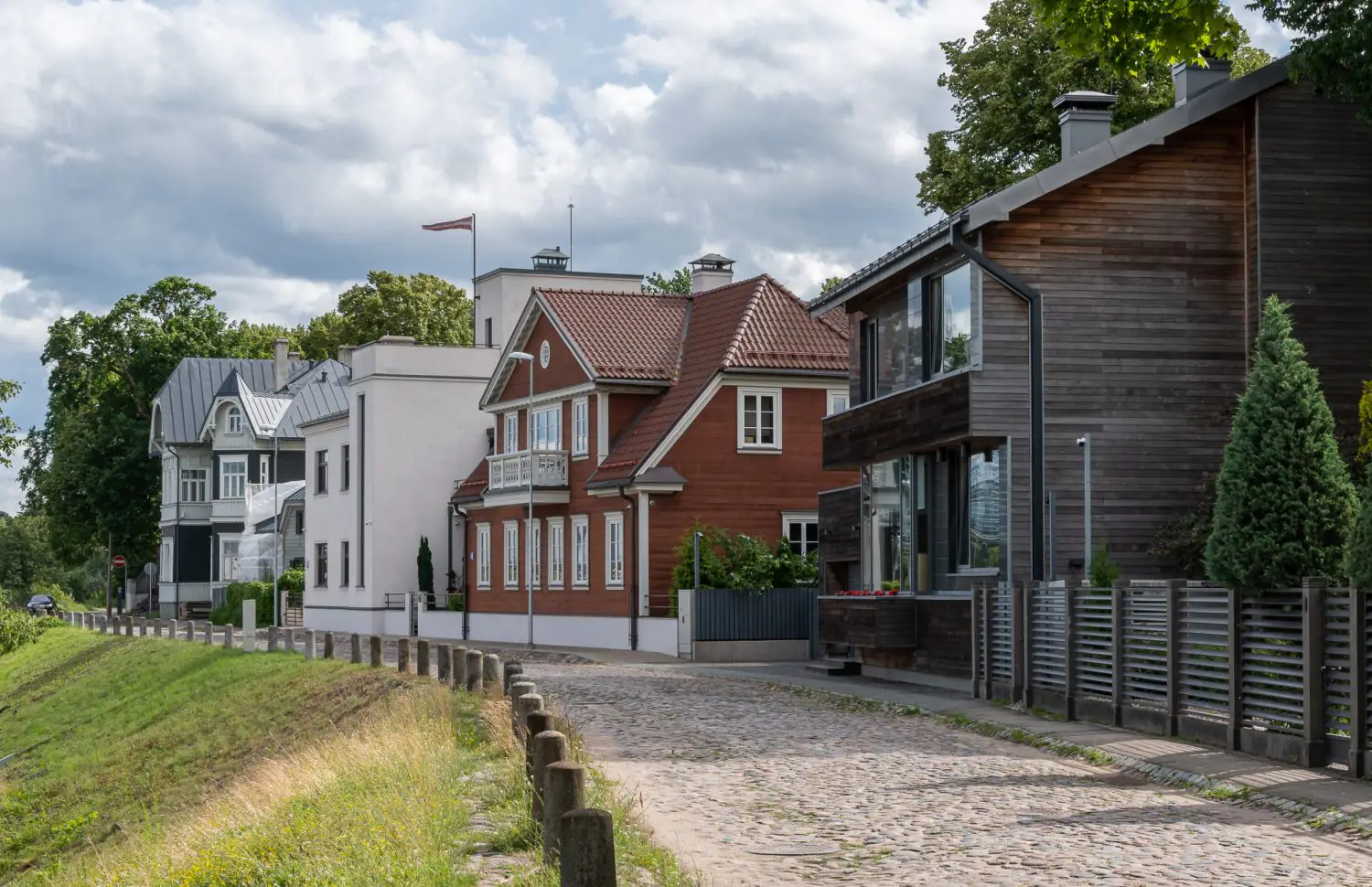
adobestock.com
In the case of some examples, we can speak of a very good restoration with the preservation of old elements and the recreation of lost ones. An example of successful preservation of architectural heritage is the restoration of a 1908–1909 house designed by the famous architect Eižens Laube. Here decorative motifs and forms of Jugendstil mixed with elements of national romanticism are well traced.
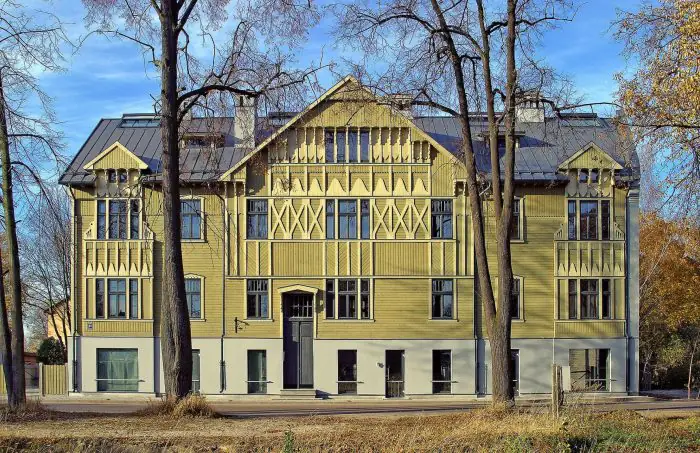
designed by Eugène Laube
zgb.lv
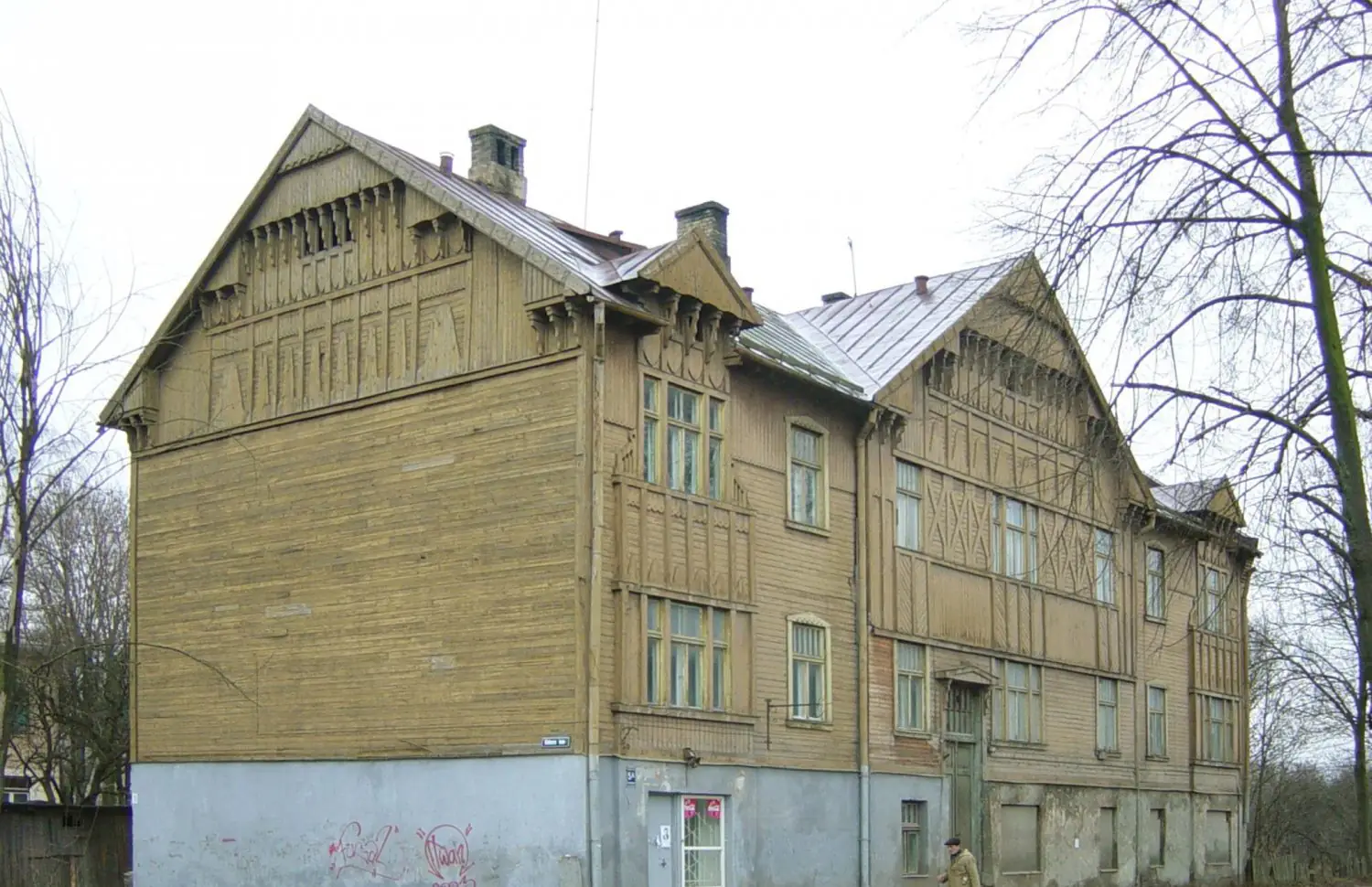
zgb.lv
Worse was the 18th century house, which was moved to Ķīpsala from Aristida Briāna iela 11 in 2006. It was also reconstructed by architects from Zaigas Gailes Birojs. As a result, additional rooms were added to the building and the roof area was increased, making an additional living floor.
One of the most interesting restored houses on Ķīpsala is nicknamed “Australian”. It was built in the late 19th century. In 2000, an Australian, Lennox, purchased the site and began demolishing the old house for the profitable construction of new ones. For the object of historical heritage city defenders stepped in. At that time, the Gailes couple was engaged in the restoration of wooden houses in Ķīpsala, and through one of their commercial companies, Ziemeļzunds, they invested in the project of preserving and partially reconstructing the building. In memory of the former Australian owner, they put a bronze kangaroo figure on the roof, commissioned from the famous sculptor Glebs Panteļejevs in 2005.
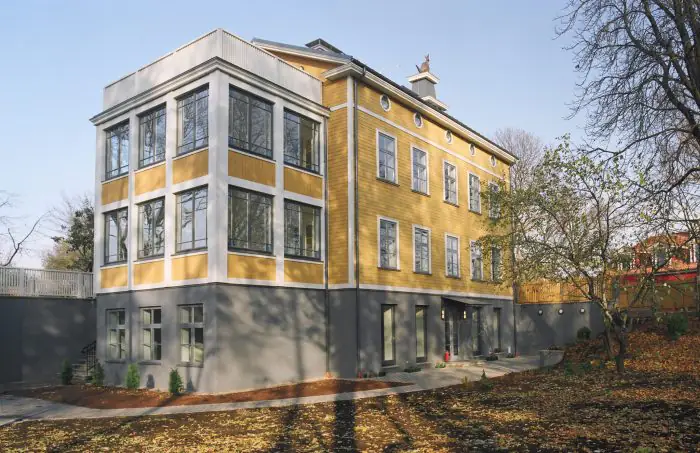
zgb.lv
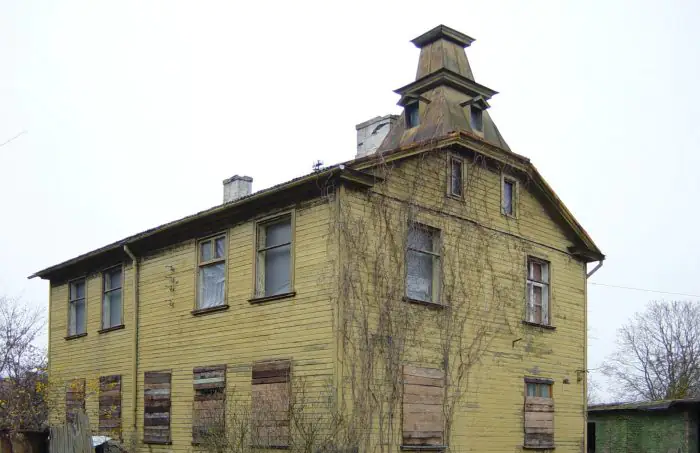
zgb.lv
There are many wooden houses in the central part of Riga, Grīziņkalns, Torņakalns, Āgenskalns, Maskavas forštate, Mežaparks, Čiekurkalns, Sarkandaugava and other districts. Neighboring Jūrmala also preserved outstanding architectural examples, one of which, the Dzintari Concert Hall, even included in the Latvia’s Cultural Canon. We wrote about Riga’s wooden architecture in another article—in the text you can find descriptions and addresses of buildings to make a route for a walk. And more information about how the city’s wooden buildings developed can be found in the text and video on the Latvia’s Cultural Canon website.
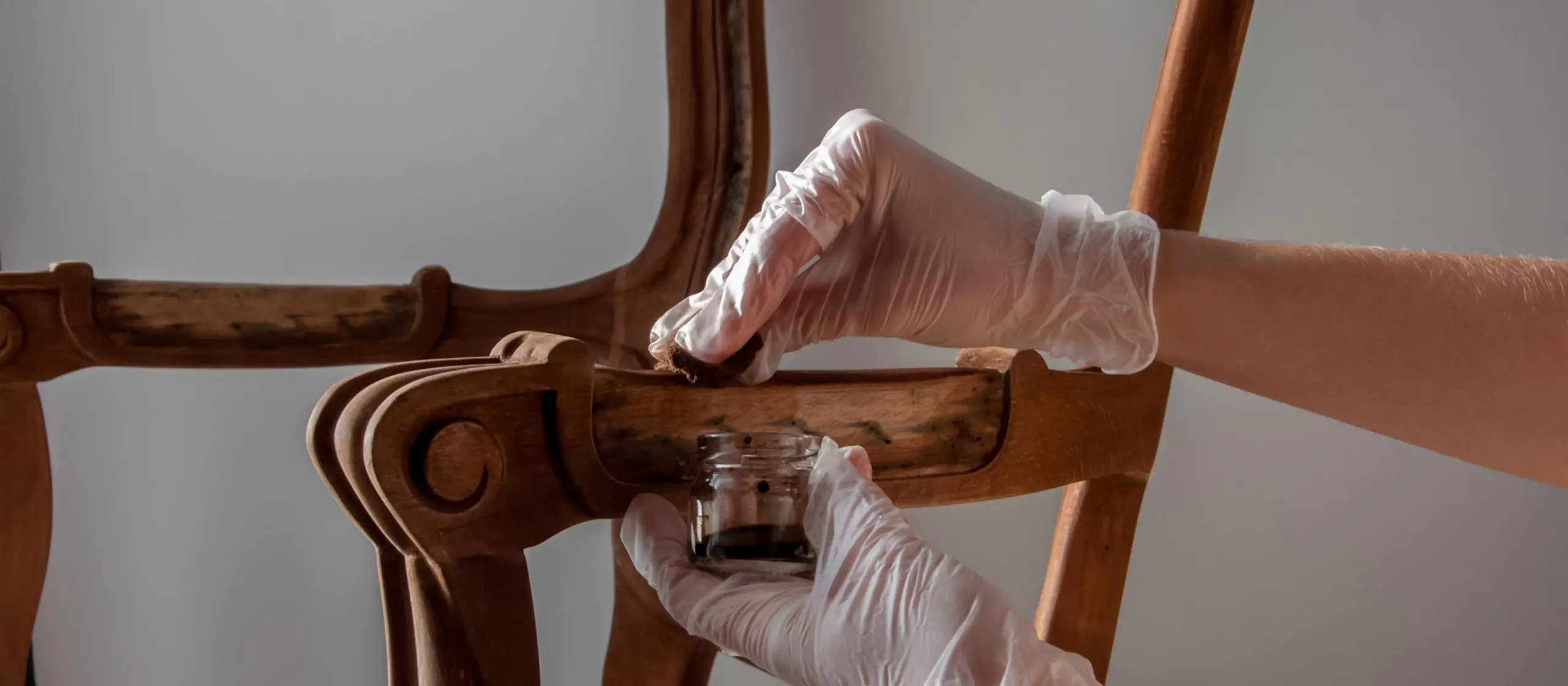
Furniture and Household Items Made of Wood
The Latvia’s Cultural Canon also includes several important wooden items. We have already written about the history of one of them: Stulpiņš—a traditional folk chair, which used to be widespread on the coast of the Gulf of Riga.
Stulpiņš is made of intricately curved parts of wood: roots, branches, thin trunk. Coastal pines are well suited for this purpose, which under the influence of the wind acquire a variety of shapes. In fact, this chair is created by nature itself, and man just slightly adjusts its design. Stulpiņš can be seen at the Ethnographic Open-Air Museum of Latvia.
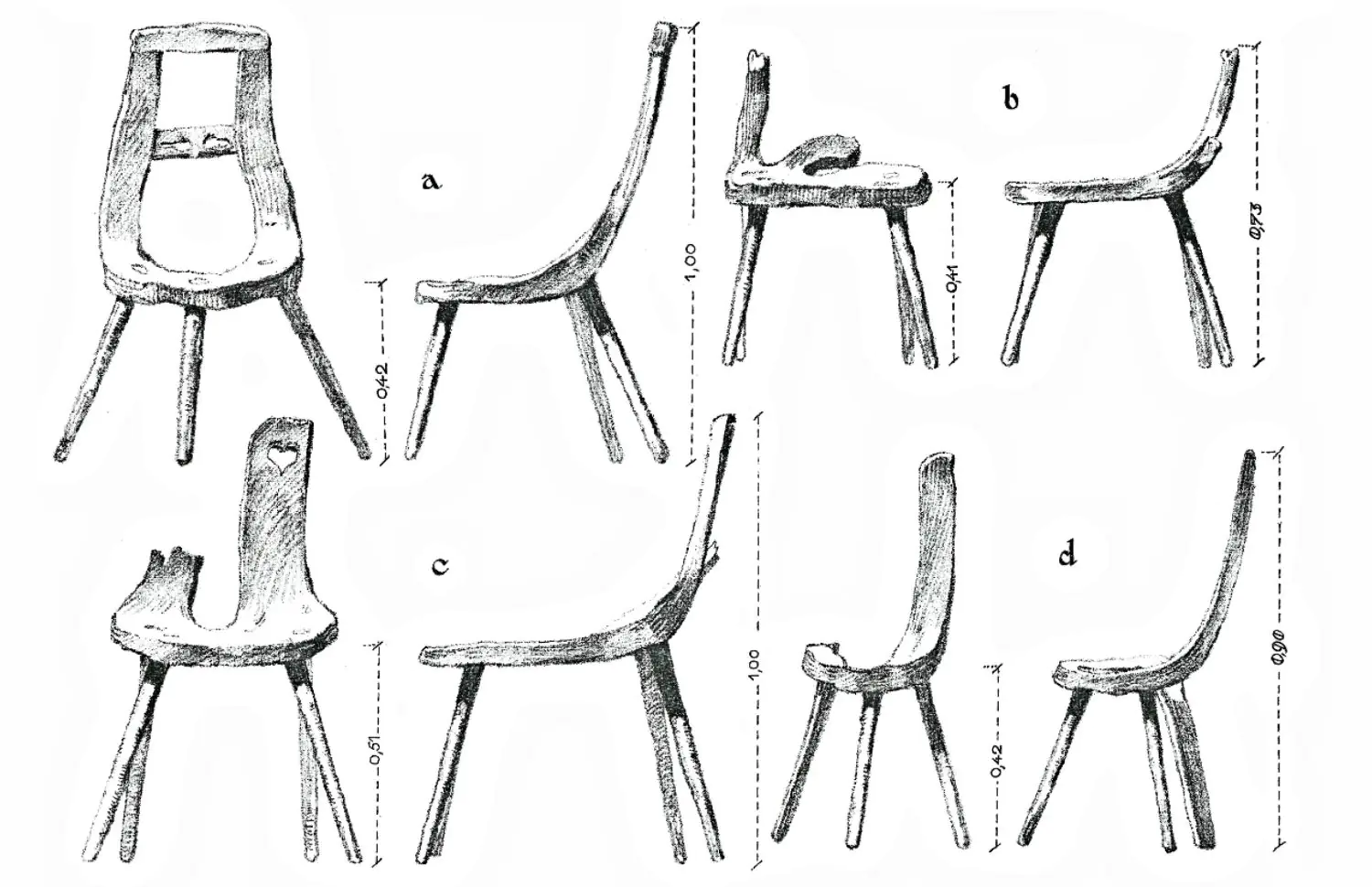
kulturaskanons.lv
The traditional Latvian chair has numerous interpretations: for example, for the Ambassadors Accreditation Hall at the Riga castle, designed by Ansis Cīrulis in 1923–1929, the form of Stulpiņš is originally reinterpreted in more modern pieces of furniture.
The art of making traditional musical instruments, the Kokle, is of great importance in Latvian culture. One of the oldest archaeological finds, presumably related to the kokle, dates back to the 13th century. The first written evidence of this musical instrument dates back to the beginning of the 17th century, and the oldest surviving kokle is believed to have been made in 1710.
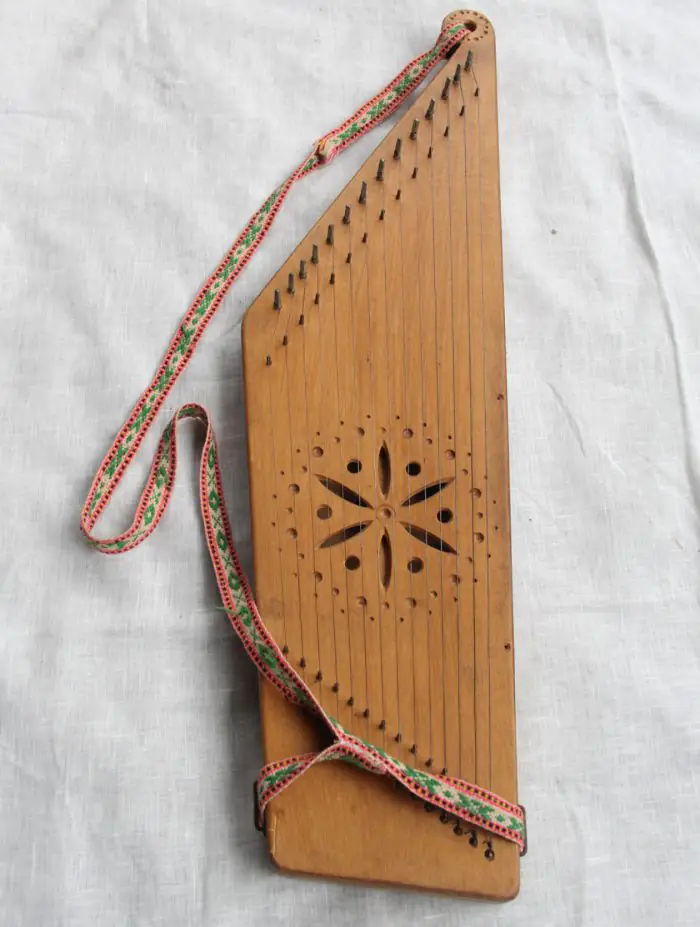
suiti.lv
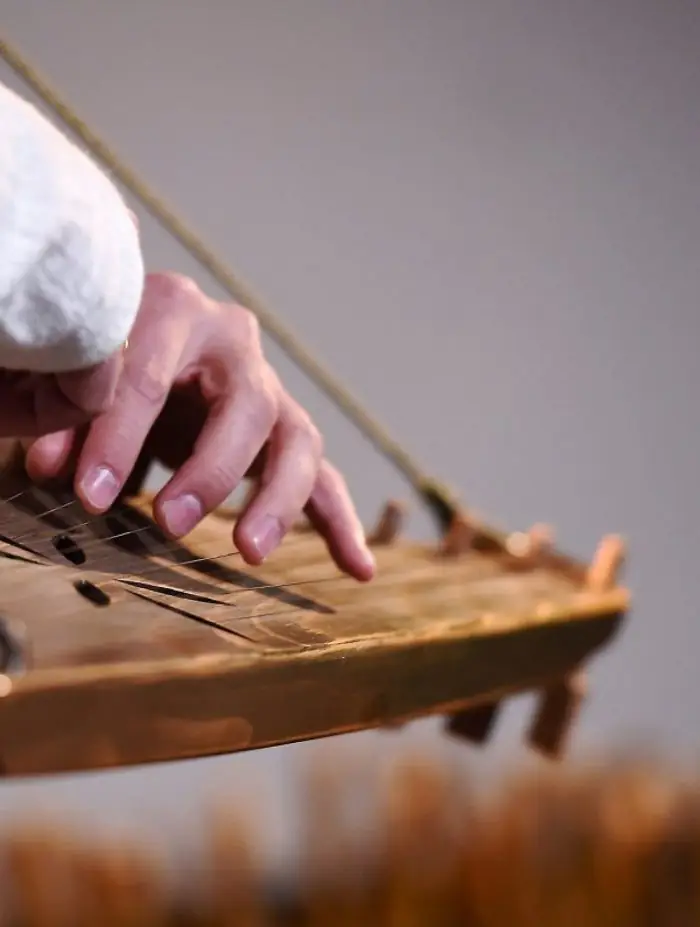
lsm.lv
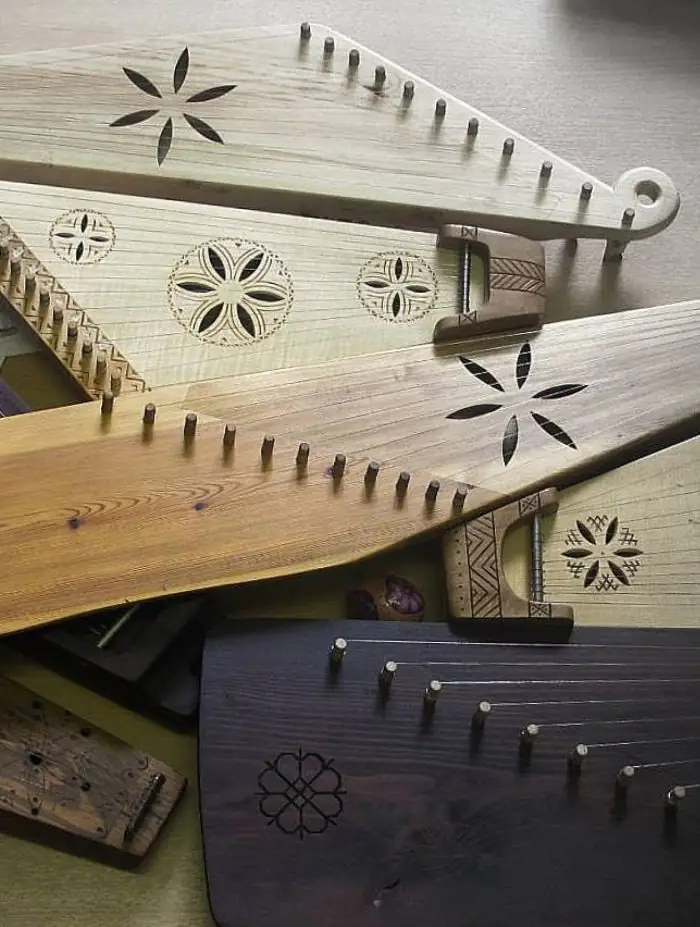
favoro.org
There are two main types: carved and glued kokle. The canonical one is considered to be the one carved from a single piece of wood. This type is characterized by a small number of strings: from 5 to 12. There is also a distinction between Kurzeme kokle (small), which has from 5 to 9 strings, and Latgalian (large), which has from 9 to 12 strings.
The glued kokle, which consists of several boards, is a more modern type of instrument that emerged at the turn of the 19th and 20th centuries under the influence of another musical instrument, the zither. Such a kokle can have many more strings: from about 15 to 90. Nowadays, along with the traditional kokle, electric, concert and other types of this instrument are widespread.
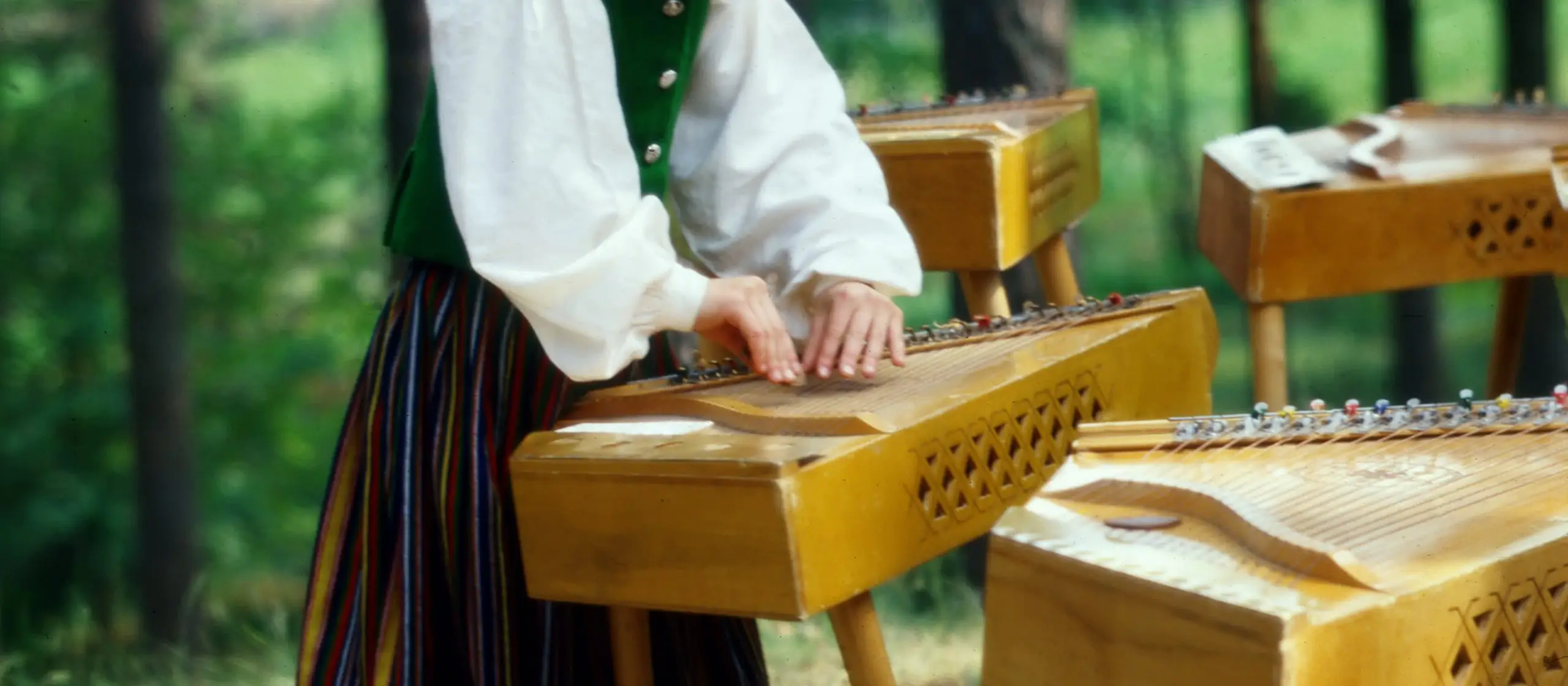
kulturaskanons.lv
Wood is also important in Latvian architecture of our time. We have only partially touched upon this topic — it is very extensive and requires a separate publication. But already now you can read the article by Silvija Ozola, dedicated to the connection between tradition and modern wooden construction in Latvia.
There is also a book by Juris Emsiņš “Koks Latvijas valsts un tautas dzīvē”, published in 2014. It describes the history of woodworking and construction in Latvia, from ancient settlements to independence from the Soviet Union in the early 1990s.
Antra Viļuma’s doctoral dissertation “Wooden structures in Latvian architecture” was written about wooden architecture in Latvia: you can start getting acquainted with this study with the brief abstracts, which are in the public domain.


